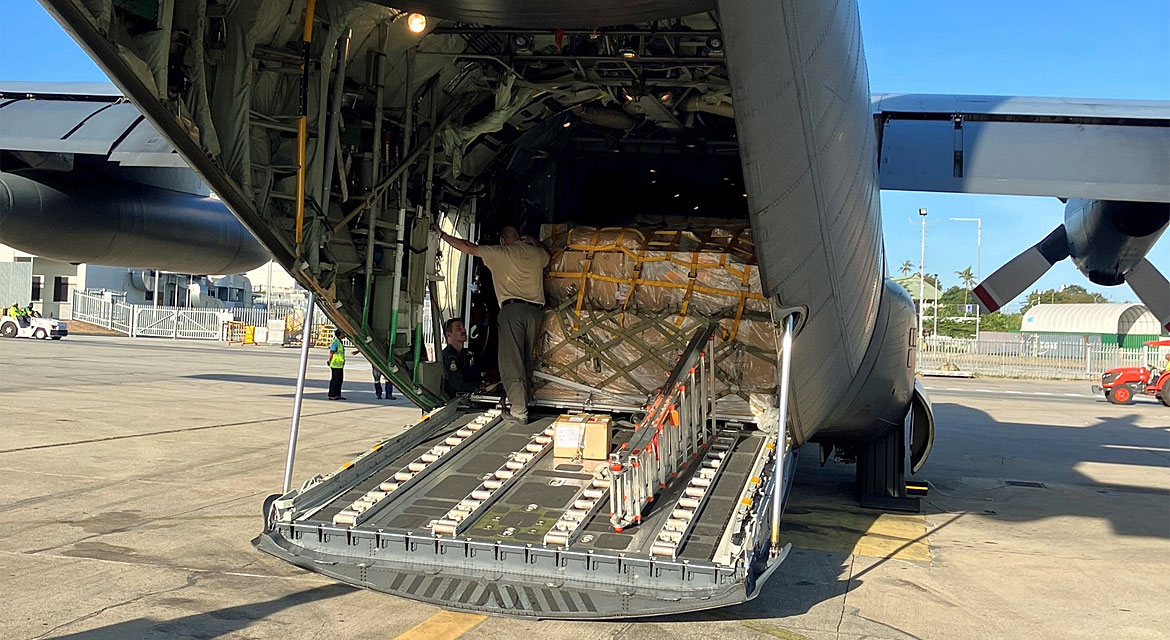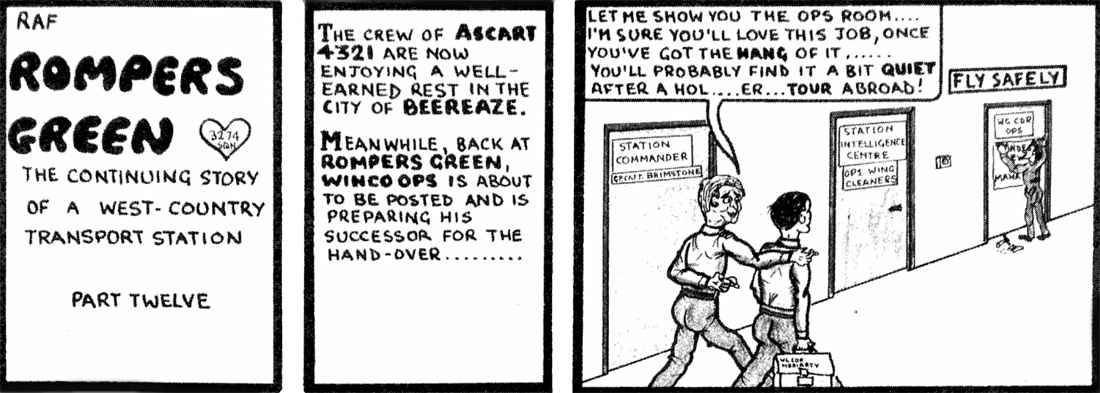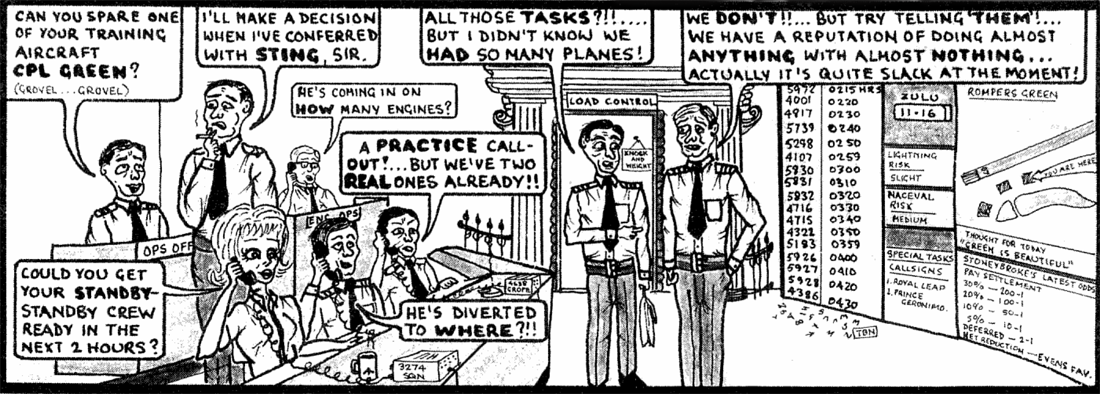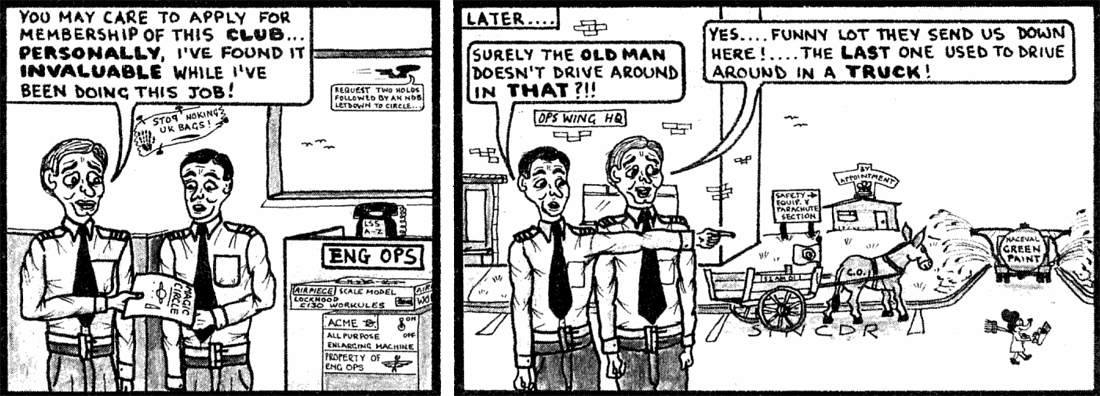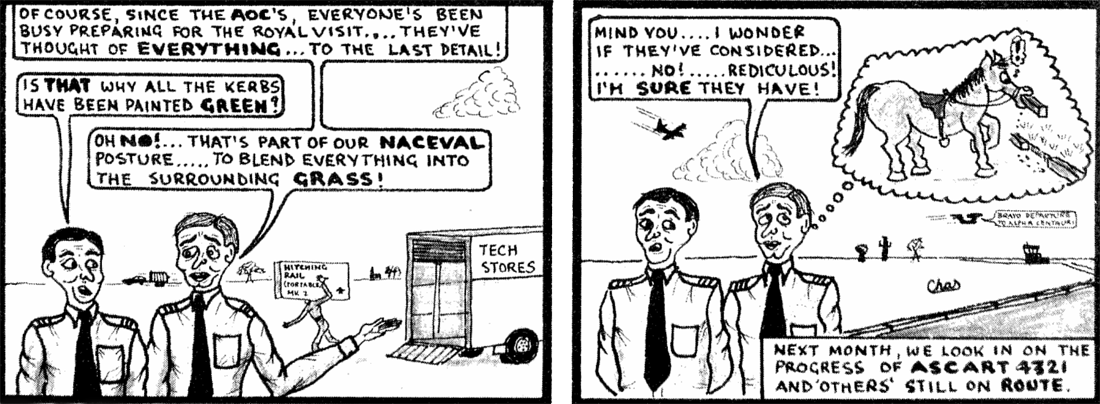
Air Movements Squadron rebased to RAF Waddington during Brize Norton runway works

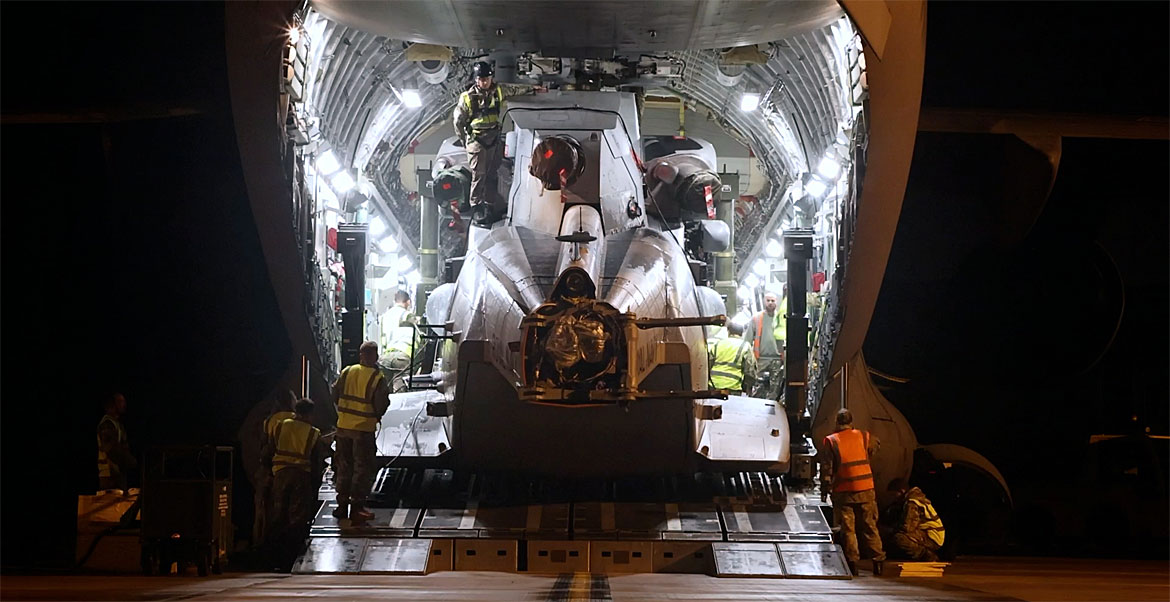
RAF Brize Norton Air Movements personnel load a Merlin Mk4 Helicopter to a C17 at RAF Waddington
While RAF Brize Norton's runway underwent crucial maintenance, 1 Air Mobility Wing's Air Movements Squadron (AMS) and their aircraft relocated to RAF Waddington so it could continue carrying out its essential role for Defence. AMS specialises in passenger and cargo handling and the safe loading and unloading of military transport aircraft.
Cpl Paul Roberts, Logistics Mover, saw AMS's short stay at RAF Waddington as a chance to show off their skills, saying: "It's been a great opportunity to demonstrate our capability of what we can do as a squadron."
RAF Brize Norton's 3,050 metre runway is one of the busiest in defence, used predominantly by the RAF's Air Mobility Force and regular visiting aircraft. Due to the impact of heat damage to portions of the runway's surface, maintenance was needed to ensure the RAF Brize Norton's operational capability into the future. A large logistical plan was put into effect to ensure no loss of operational capability. To do this, RAF Brize Norton aircraft were based at various RAF Stations and civilian airports across the UK to enable the continuation of air mobility support to defence, including the temporary relocation of crew and personnel.
forces.net
Cpl Paul Roberts, Logistics Mover, saw AMS's short stay at RAF Waddington as a chance to show off their skills, saying: "It's been a great opportunity to demonstrate our capability of what we can do as a squadron."
RAF Brize Norton's 3,050 metre runway is one of the busiest in defence, used predominantly by the RAF's Air Mobility Force and regular visiting aircraft. Due to the impact of heat damage to portions of the runway's surface, maintenance was needed to ensure the RAF Brize Norton's operational capability into the future. A large logistical plan was put into effect to ensure no loss of operational capability. To do this, RAF Brize Norton aircraft were based at various RAF Stations and civilian airports across the UK to enable the continuation of air mobility support to defence, including the temporary relocation of crew and personnel.
forces.net

From: Terry Jackson, St Albans, Herts
Subject: Proud Mover Moments
Hi Tony,
There was only one place to be to be known as a ‘proud mover’ and that was as a shift leader at Joint Service Air Trooping Centre at RAF Hendon. My time was 1971 to 1973 working a shift pattern 12 hours on, day off, standby day, day off. We never knew what was to meet us on the ‘State Board’ as we started our shift.
There were Comp ‘A’ passengers travelling in from all over the world to get to dying or seriously ill family members. Many had obscure destinations like Lochgoilhead on the west coast of Scotland. The conflict in Northern Ireland would often find us dealing with wives whose husbands had been killed or seriously wounded. There could also be flying accidents to deal with. Our commanding officer, a Lt. Col, had picked on on the Apollo 13 statement, ‘Failure is not an option’. We had some real explaining to do if we failed to achieve our objectives. It was a paradox that our satisfaction of a job well done was at the expense of sadness and grief in other people's lives. Every facility was made available in order to get the job done. RAF aircraft were put at our disposal identified as 'raining flights' Taxis would drive though the night. One Sunday, my shift with the help of MOD, arranged for the runway at Unst in the Shetlands to be opened for two hours in order to get two sisters to their dying mother. The sisters had travelled from Hong Kong; no point them getting stuck in London.
Subject: Proud Mover Moments
Hi Tony,
There was only one place to be to be known as a ‘proud mover’ and that was as a shift leader at Joint Service Air Trooping Centre at RAF Hendon. My time was 1971 to 1973 working a shift pattern 12 hours on, day off, standby day, day off. We never knew what was to meet us on the ‘State Board’ as we started our shift.
There were Comp ‘A’ passengers travelling in from all over the world to get to dying or seriously ill family members. Many had obscure destinations like Lochgoilhead on the west coast of Scotland. The conflict in Northern Ireland would often find us dealing with wives whose husbands had been killed or seriously wounded. There could also be flying accidents to deal with. Our commanding officer, a Lt. Col, had picked on on the Apollo 13 statement, ‘Failure is not an option’. We had some real explaining to do if we failed to achieve our objectives. It was a paradox that our satisfaction of a job well done was at the expense of sadness and grief in other people's lives. Every facility was made available in order to get the job done. RAF aircraft were put at our disposal identified as 'raining flights' Taxis would drive though the night. One Sunday, my shift with the help of MOD, arranged for the runway at Unst in the Shetlands to be opened for two hours in order to get two sisters to their dying mother. The sisters had travelled from Hong Kong; no point them getting stuck in London.
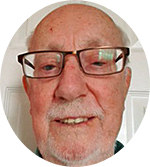

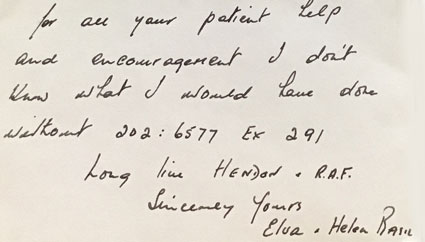
This ‘Thank You’ note was from Elva Basil who was in London as her young daughter was being treated at Great Ormond Street Hospital. It says everything that needs to be said about the effect that ‘Movers’ had on other people’s lives. It was a pleasure!
Best regards
Terry
Terry

From: Clive Price, Brecon
Subject: Re: OBB #073123
Hi Tony,
I found the last Old Bods Brief very interesting, with so many meeting holders of the Victoria and George crosses, our top medal for valour. It reminded me of myself and the elusive SAC Jack Murray in Northern Ireland loading a regimental band on their way to Germany - the army photographer was there to see them off. Jack puffed up his chest and told the sergeant photographer no photos of RAF aircraft were allowed and he just walked away. I stood well back as I recognised him, it was Bill Speakman VC (a Korean War celebrated hero).
Ken Davie mentioned the Argosy crash in Libya. A friend from Abingdon, Cpl."Scho" Schofield, filmed it on his cine camera as it crashed. He handed the film over for the inquiry, never to see it again. The MAMS team there were relieved to note that the in the wreckage the vehicles were all still chained to the aircraft floor!
Cheers!
Taff Price (the fat one)
Subject: Re: OBB #073123
Hi Tony,
I found the last Old Bods Brief very interesting, with so many meeting holders of the Victoria and George crosses, our top medal for valour. It reminded me of myself and the elusive SAC Jack Murray in Northern Ireland loading a regimental band on their way to Germany - the army photographer was there to see them off. Jack puffed up his chest and told the sergeant photographer no photos of RAF aircraft were allowed and he just walked away. I stood well back as I recognised him, it was Bill Speakman VC (a Korean War celebrated hero).
Ken Davie mentioned the Argosy crash in Libya. A friend from Abingdon, Cpl."Scho" Schofield, filmed it on his cine camera as it crashed. He handed the film over for the inquiry, never to see it again. The MAMS team there were relieved to note that the in the wreckage the vehicles were all still chained to the aircraft floor!
Cheers!
Taff Price (the fat one)


40 Squadron RNZAF delivers aid to Papua New Guinea
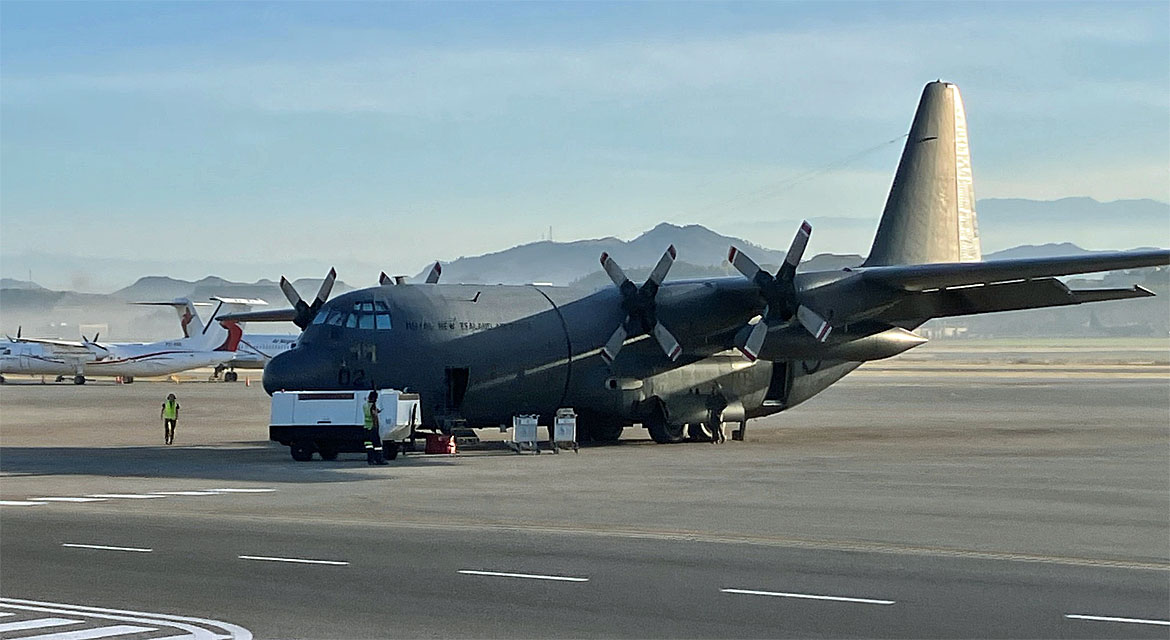
One of our Hercules aircraft and crew from No. 40 Squadron have gone to Bougainville, Papua New Guinea, carrying aid supplies following a volcanic eruption which has affected more than 8,000 people. The deployment follows a request from Papua New Guinea Prime Minister James Marape for international partners to support the Autonomous Government of Bougainville and the Government of Papua New Guinea as they assess the damage and respond to emergency needs. Ash plumes and other volcanic effects have affected surrounding communities. While no deaths or injuries have been reported, ash fall has posed challenges for food and water security.
The PNG National Disaster Centre (NDC) advised that the total number of persons impacted is over 8,000, with approximately 3,500 people displaced to two evacuation camps. The number of displaced people is expected to increase.
Commander Joint Forces New Zealand, Rear Admiral Jim Gilmour, said the NZDF remained committed to supporting Pacific neighbours when called on to help. The C-130 has just arrived in Buka, Papua New Guinea with approximately 7,000kg of supplies on board, after leaving RNZAF Base Auckland at Whenuapai yesterday morning. "Our C-130 has this morning taken these essential supplies in to Buka which will help meet some of the basic needs of those affected by the volcanic activity. As always we stand ready to provide further assistance if called upon to do so,” Rear Admiral Gilmour said.
The supplies included lighting, generators, hygiene and family kits, water containers, water purification tablets, temporary shelters and tarpaulins.
“Aotearoa New Zealand’s thoughts are with the people of the Autonomous Region of Bougainville, Papua New Guinea, who have been significantly impacted by ongoing volcanic activity on Mt Bagana since July,” Secretary of Foreign Affairs and Trade, Chris Seed said.
New Zealand Ministry of Foreign Affairs and Trade
The PNG National Disaster Centre (NDC) advised that the total number of persons impacted is over 8,000, with approximately 3,500 people displaced to two evacuation camps. The number of displaced people is expected to increase.
Commander Joint Forces New Zealand, Rear Admiral Jim Gilmour, said the NZDF remained committed to supporting Pacific neighbours when called on to help. The C-130 has just arrived in Buka, Papua New Guinea with approximately 7,000kg of supplies on board, after leaving RNZAF Base Auckland at Whenuapai yesterday morning. "Our C-130 has this morning taken these essential supplies in to Buka which will help meet some of the basic needs of those affected by the volcanic activity. As always we stand ready to provide further assistance if called upon to do so,” Rear Admiral Gilmour said.
The supplies included lighting, generators, hygiene and family kits, water containers, water purification tablets, temporary shelters and tarpaulins.
“Aotearoa New Zealand’s thoughts are with the people of the Autonomous Region of Bougainville, Papua New Guinea, who have been significantly impacted by ongoing volcanic activity on Mt Bagana since July,” Secretary of Foreign Affairs and Trade, Chris Seed said.
New Zealand Ministry of Foreign Affairs and Trade

From: David Powell, Princes Risborough, Bucks
Subject: Re: UKMAMS OBA OBB #073123
Hi Tony
I see you have done it again: one story leading to another. In this case, the Ken Davie story about India Team at Got-El-Afrag, Libya, May 1968.
Exercise Crayon was a major effort with most of the UK MAMS Teams deployed including a Headquarters Ops Team. F Team had deployed to RAF Luqa [Malta] by VC10 on the 18th April 1968, the day before Ken and India. The Exercise was in three phases; a major reinforcement and assembly deployment with handling mainly VC10, Britannia and Belfast at Luqa, leading to a launch of the main force, including all the UK MAMS resources, to an airhead at RAF El Adem, Libya. Then setting up a forward tactical airfield, Got Al Afraq in the desert, which would include a MAMS team forward on rotation, and F Team was down for a spell in the field.
Fate stepped in when, well into the first phase, a ‘thingy’ failing in a recycled reworked ancient Hastings aircraft winch on a new shiny Belfast. This led to a runaway winch while F Team were unloading an Army helicopter backwards, probably a Scout or similar air-taxi Army officers for the use of, just as the load had transferred to proceeding down the ramp; at ever increasing speed; with the team desperately trying to hold back the chopper at one end while I was proceeded at the other end also at ever increasing speed, with the tail boom bit on my shoulder trying to protect the tail rotor.
Many of you know the rest: a stop at the NAAFI van for refreshment; me losing my cool in the Exercise Ops Room and mistakenly swigging my lemonade from the bottle containing Carbon Tetrachloride, whiteboard cleaning for the use of. Bob Tuner passing me his recently acquired bottle of milk; blue lights (I’m told) and waking up the following morning in Bighi Hospital with a major hangover and a Doc with a “Don’t know what the cure is – you’re the first live one we’ve had!” Also, I had been stuffed full of morphine so I could slip away peacefully, and was as high as a kite! I then spent a week in hospital, eating mainly pasta and watching the flowers grow in the hospital grounds while being brought back down to ground zero. I was then discharged on a week’s home sick leave, but I asked if I could remain at Luqa in case something went wrong and the local hospital team could pick up the pieces. It also meant I could see a bit more of a rather nice Naval Hospital Nurse I had first met between shifts.
Meanwhile, while I had been watching the grass grow in the hospital gardens, the Exercise, and my team, had moved on to El Adam, from where F team were scheduled to redeploy forward to Got Al Afraq. Remember, those were the days before mobile phones and social media, so the next thing I learnt about the Exercise was on the afternoon of the 8th May, and now on my way back to RAF Lyneham on board a 511 Sqn Britannia. While loitering in the galley, I learned from the crew that an Argosy had crashed on the way out of Got Al Afraq, with 11 killed. Given a crew of 5, 6 others? A MAMS team? F Team? Only when I got back to Abingdon that evening was I able to find out that being leaderless, F team, had been replaced by Chas Clarke and his team; so that could have been us, and should have been them, but Chas had been told to stay on for 12 hours before replacement. Their slots on the Argosy were then allocated to 6 sadly doomed Army personnel.
Stay safe, best wishes
David Powell F Team RAF Abingdon 1967-69.
p.s. Chas, Ken and/or Clive Price (F team muscle power) may be able to straighten any kinks in my 55-year memory of what actually happened after I pulled out of the exercise.
Subject: Re: UKMAMS OBA OBB #073123
Hi Tony
I see you have done it again: one story leading to another. In this case, the Ken Davie story about India Team at Got-El-Afrag, Libya, May 1968.
Exercise Crayon was a major effort with most of the UK MAMS Teams deployed including a Headquarters Ops Team. F Team had deployed to RAF Luqa [Malta] by VC10 on the 18th April 1968, the day before Ken and India. The Exercise was in three phases; a major reinforcement and assembly deployment with handling mainly VC10, Britannia and Belfast at Luqa, leading to a launch of the main force, including all the UK MAMS resources, to an airhead at RAF El Adem, Libya. Then setting up a forward tactical airfield, Got Al Afraq in the desert, which would include a MAMS team forward on rotation, and F Team was down for a spell in the field.
Fate stepped in when, well into the first phase, a ‘thingy’ failing in a recycled reworked ancient Hastings aircraft winch on a new shiny Belfast. This led to a runaway winch while F Team were unloading an Army helicopter backwards, probably a Scout or similar air-taxi Army officers for the use of, just as the load had transferred to proceeding down the ramp; at ever increasing speed; with the team desperately trying to hold back the chopper at one end while I was proceeded at the other end also at ever increasing speed, with the tail boom bit on my shoulder trying to protect the tail rotor.
Many of you know the rest: a stop at the NAAFI van for refreshment; me losing my cool in the Exercise Ops Room and mistakenly swigging my lemonade from the bottle containing Carbon Tetrachloride, whiteboard cleaning for the use of. Bob Tuner passing me his recently acquired bottle of milk; blue lights (I’m told) and waking up the following morning in Bighi Hospital with a major hangover and a Doc with a “Don’t know what the cure is – you’re the first live one we’ve had!” Also, I had been stuffed full of morphine so I could slip away peacefully, and was as high as a kite! I then spent a week in hospital, eating mainly pasta and watching the flowers grow in the hospital grounds while being brought back down to ground zero. I was then discharged on a week’s home sick leave, but I asked if I could remain at Luqa in case something went wrong and the local hospital team could pick up the pieces. It also meant I could see a bit more of a rather nice Naval Hospital Nurse I had first met between shifts.
Meanwhile, while I had been watching the grass grow in the hospital gardens, the Exercise, and my team, had moved on to El Adam, from where F team were scheduled to redeploy forward to Got Al Afraq. Remember, those were the days before mobile phones and social media, so the next thing I learnt about the Exercise was on the afternoon of the 8th May, and now on my way back to RAF Lyneham on board a 511 Sqn Britannia. While loitering in the galley, I learned from the crew that an Argosy had crashed on the way out of Got Al Afraq, with 11 killed. Given a crew of 5, 6 others? A MAMS team? F Team? Only when I got back to Abingdon that evening was I able to find out that being leaderless, F team, had been replaced by Chas Clarke and his team; so that could have been us, and should have been them, but Chas had been told to stay on for 12 hours before replacement. Their slots on the Argosy were then allocated to 6 sadly doomed Army personnel.
Stay safe, best wishes
David Powell F Team RAF Abingdon 1967-69.
p.s. Chas, Ken and/or Clive Price (F team muscle power) may be able to straighten any kinks in my 55-year memory of what actually happened after I pulled out of the exercise.

RCAF aircraft, CAF personnel respond to wildfires in NWT as state of emergency declared

As wildfires continue to burn out of control in the Northwest Territories (NWT) of Canada, Municipal and Community Affairs Minister Shane Thompson declared a Territorial State of Emergency on Aug. 15 to allow the government “to acquire and deploy the necessary resources” to manage the fires and protect residents.
Some of those resources include Royal Canadian Air Force (RCAF) aircraft, as well as Canadian Armed Forces (CAF) personnel, who began collaborating with the Government of the Northwest Territories (GNWT) on Aug. 13 to determine how best to assist with response efforts.
The government requested assistance from the CAF for a period of two weeks, beginning on Aug. 15, which may be extended if necessary. The request was approved by Canada’s new defence minister Bill Blair.
As of the morning of Aug. 21, there were 236 active fires across the NWT, with a total of 270 fires this year. Those wildfires have been responsible for burning 2.2 million hectares year to date. “We find ourselves in a crisis situation, and our government is using every tool available to assist,” said Thompson in a press release.
In an email to Skies, a Department of National Defence (DND) spokesperson said roughly 120 CAF personnel arrived in Yellowknife from 2nd Canadian Division on the evening of Aug. 14, ready to assist with wildfire management efforts. About 100 of those members began working under the direction of GNWT Wildfire Management to aid in Type III firefighting roles on the ground, such as fire turnover, mop up, and hotspot dowsing. The remainder began working “either in a planning and coordination function with Territorial officials, or supporting efforts of their personnel,” the DND spokesperson said.
skiesmag.com
Some of those resources include Royal Canadian Air Force (RCAF) aircraft, as well as Canadian Armed Forces (CAF) personnel, who began collaborating with the Government of the Northwest Territories (GNWT) on Aug. 13 to determine how best to assist with response efforts.
The government requested assistance from the CAF for a period of two weeks, beginning on Aug. 15, which may be extended if necessary. The request was approved by Canada’s new defence minister Bill Blair.
As of the morning of Aug. 21, there were 236 active fires across the NWT, with a total of 270 fires this year. Those wildfires have been responsible for burning 2.2 million hectares year to date. “We find ourselves in a crisis situation, and our government is using every tool available to assist,” said Thompson in a press release.
In an email to Skies, a Department of National Defence (DND) spokesperson said roughly 120 CAF personnel arrived in Yellowknife from 2nd Canadian Division on the evening of Aug. 14, ready to assist with wildfire management efforts. About 100 of those members began working under the direction of GNWT Wildfire Management to aid in Type III firefighting roles on the ground, such as fire turnover, mop up, and hotspot dowsing. The remainder began working “either in a planning and coordination function with Territorial officials, or supporting efforts of their personnel,” the DND spokesperson said.
skiesmag.com
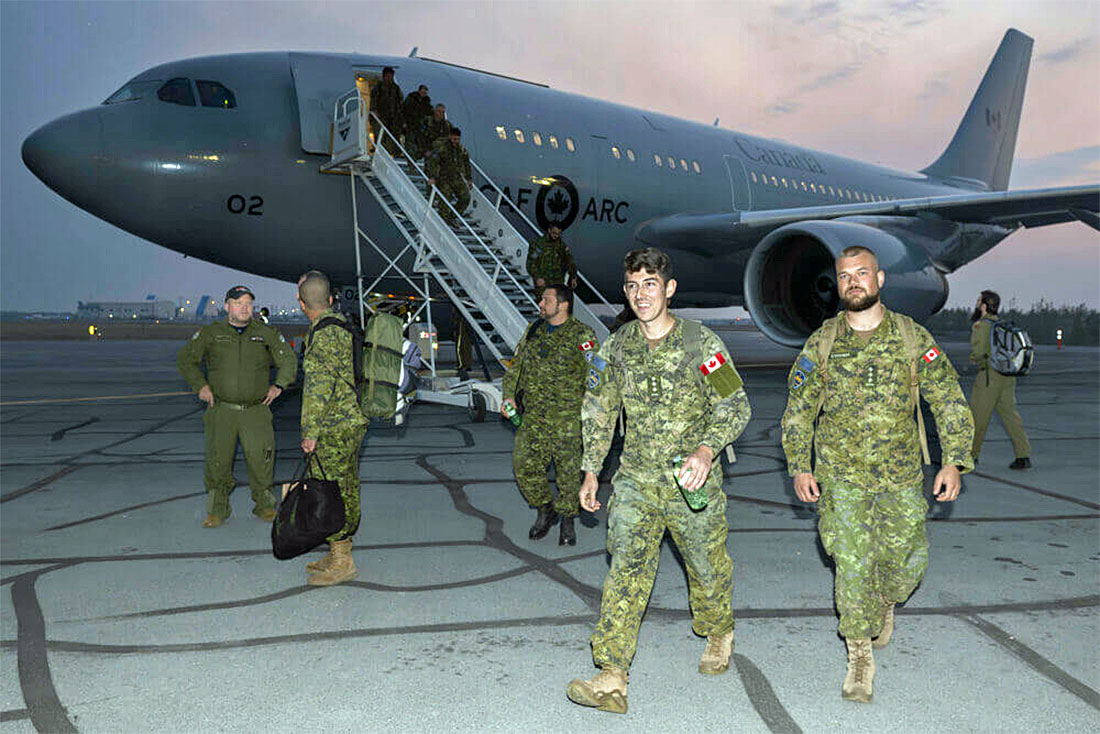
Canadian Armed Forces soldiers from 2e Battalion, Royal 22e Régiment, arriving in Yellowknife via a CC-150 Polaris aircraft to respond to wildfires in the Northwest Territories on Aug. 14, 2023. MCpl Alana Morin/CAF Photo
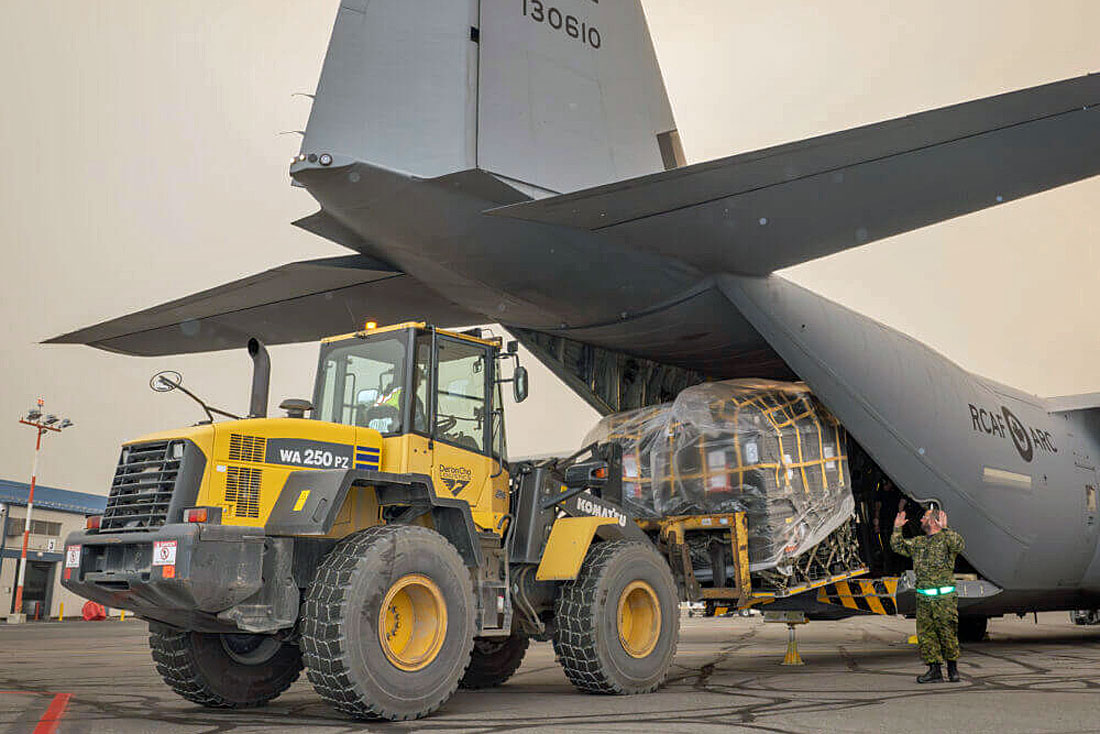
WO Jason Lapierre directs the off-loading of cargo from a CC-130J Hercules aircraft at Yellowknife Airport on Aug. 14, 2023. MCpl Alana Morin/CAF Photo
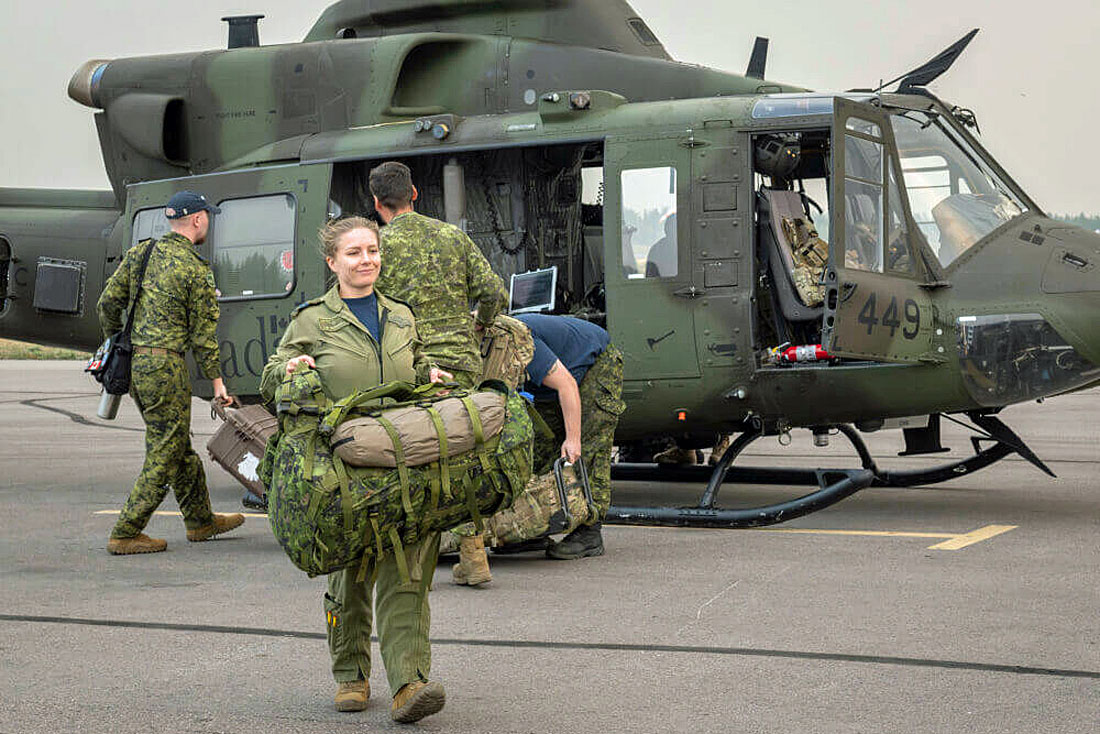
Capt Liz Campbell of 440 Transport Squadron unloads cargo off a CH-146 Griffon helicopter at Yellowknife Airport. MCpl Alana Morin/CAF Photo
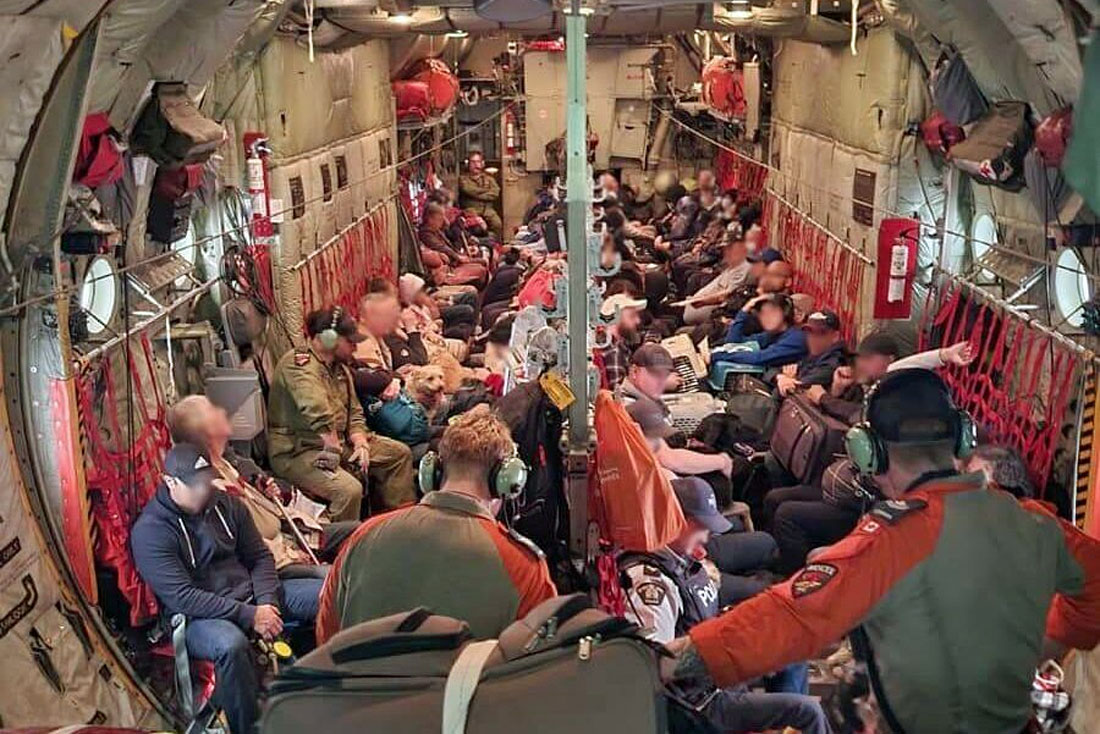
On Aug. 14, an RCAF CC-130H Hercules aircraft airlifted residents of Fort Smith, NWT, to Fort McMurray, Alberta, while also supporting the evacuation of Hay River, NWT. CAF Photo
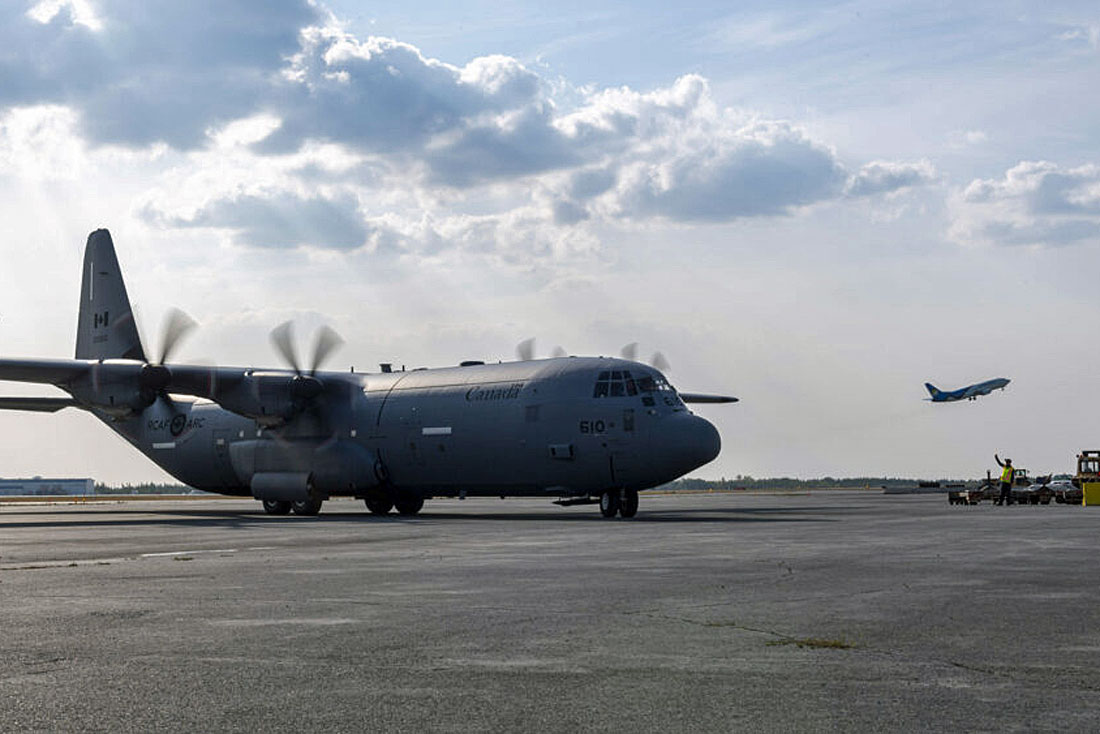
A CC-130 Hercules aircraft from 436 Transport Squadron arrives in Yellowknife to assist with the evacuation of citizens on Aug. 17, 2023. Sailor 1st Class Patrice Harvey/CAF Photo
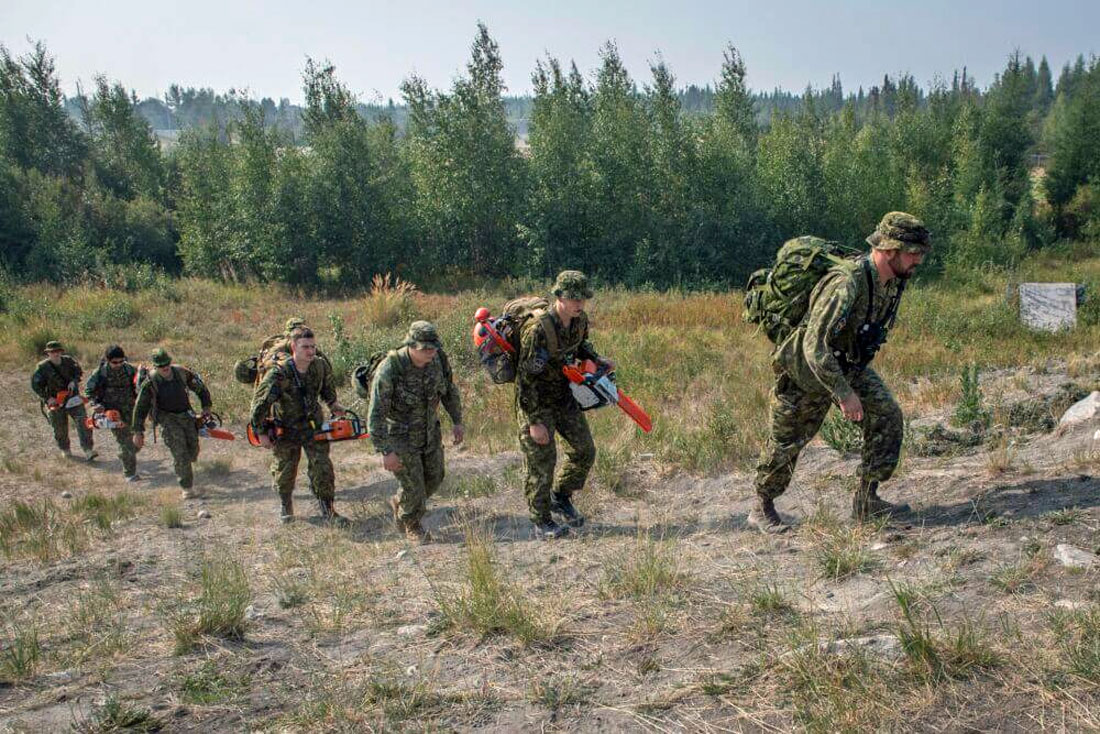
CAF soldiers from 2e Battalion, Royal 22e Régiment, and 5 Combat Engineer Regiment head to the forest behind Parker Recreation Field in Yellowknife to work on a firebreak on Aug. 16, 2023. MCpl Alana Morin/CAF Photo
Canadian Wildfires as at August 26th, 2023
See the latest interactive wildfire map at Canadian Interagency Forest Fire Centre Inc.
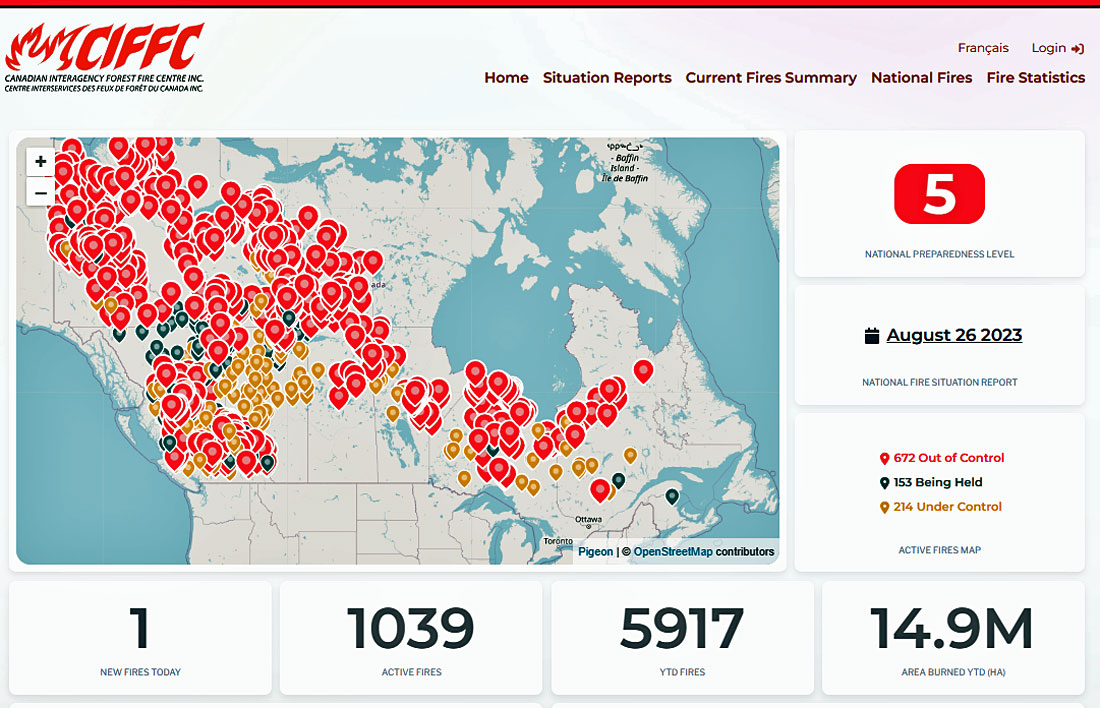

From: Andy Downard, Ballarat, VIC
Subject: Pet Hates
Hi Tony,
My pet hate would have to be a Flat Floor Belfast to load or unload. That was a whole shift you weren't ever going to get back. I always thought that the planners in the Head Shed should be brought down to do one every now and then.
Andy
Subject: Pet Hates
Hi Tony,
My pet hate would have to be a Flat Floor Belfast to load or unload. That was a whole shift you weren't ever going to get back. I always thought that the planners in the Head Shed should be brought down to do one every now and then.
Andy


From: Michael (OBie) O'Brien, Sanctuary Point, NSW
Subject: Pet Hates
G'Day Tony, and as usual BZ for your continued efforts on behalf of us Movers and associated reprobates!
Pet hates, you say? It would have to be those seekers of information to present to the heaving masses: bleedin' journalists, and their numerous methods of getting the story to feed back to their Editors!
I first encountered their self-centred ways in Cambodia in 1992, during the initial phase of UNTAC. Their (self-determined) need to travel (anywhere) often exceeded their truthfulness in gaining authorisation to access UN-fleet air assets, which often resulted in, at least, stand-up arguments not only at the airframe during boarding (about which one of my erstwhile colleagues, in this hallowed company, can elaborate), but also in the UN Mission HQ (my purview, fortunately also my 'top cover'), in their attempts to over-ride the authority of those personnel tasked with the orderly and safe management of the air operations.
The second exposure to their oafish ways was during the lead-up to the 1998 Australian Federal Election, when transportation of the various Government, and the hope-to-be next, incumbents, were allocated RAAF assets to cover our wide-brown land. Of necessity much of the transportation for theirtravelling circuses and entourages was required to transit, internalia, RAAF Richmond.
On several occasions these fine examples of the news media, notwithstanding specific instructions, were not averse to not obeying safety and security requirements, nor adhering to such niceties as requesting access to phones/telex facilities. And I remain to this day amazed at the athletic ability of some the media entourages who had no hesitation in leaping over the Waiting Room seats, and other ambulant cargo, in their attempts to board first ... and might I add, in no way slowed-down in their endeavours by their 'carry-on' technical equipment! Gotta get that good seat on the C130, hey!
Grrr, rant over, Ta! Keep yaself nice,
Cop Ya,
OBie
Subject: Pet Hates
G'Day Tony, and as usual BZ for your continued efforts on behalf of us Movers and associated reprobates!
Pet hates, you say? It would have to be those seekers of information to present to the heaving masses: bleedin' journalists, and their numerous methods of getting the story to feed back to their Editors!
I first encountered their self-centred ways in Cambodia in 1992, during the initial phase of UNTAC. Their (self-determined) need to travel (anywhere) often exceeded their truthfulness in gaining authorisation to access UN-fleet air assets, which often resulted in, at least, stand-up arguments not only at the airframe during boarding (about which one of my erstwhile colleagues, in this hallowed company, can elaborate), but also in the UN Mission HQ (my purview, fortunately also my 'top cover'), in their attempts to over-ride the authority of those personnel tasked with the orderly and safe management of the air operations.
The second exposure to their oafish ways was during the lead-up to the 1998 Australian Federal Election, when transportation of the various Government, and the hope-to-be next, incumbents, were allocated RAAF assets to cover our wide-brown land. Of necessity much of the transportation for their
On several occasions these fine examples of the news media, notwithstanding specific instructions, were not averse to not obeying safety and security requirements, nor adhering to such niceties as requesting access to phones/telex facilities. And I remain to this day amazed at the athletic ability of some the media entourages who had no hesitation in leaping over the Waiting Room seats, and other ambulant cargo, in their attempts to board first ... and might I add, in no way slowed-down in their endeavours by their 'carry-on' technical equipment! Gotta get that good seat on the C130, hey!
Grrr, rant over, Ta! Keep yaself nice,
Cop Ya,
OBie


Say hello to the Royal Canadian Air Force CC-330 Husky!
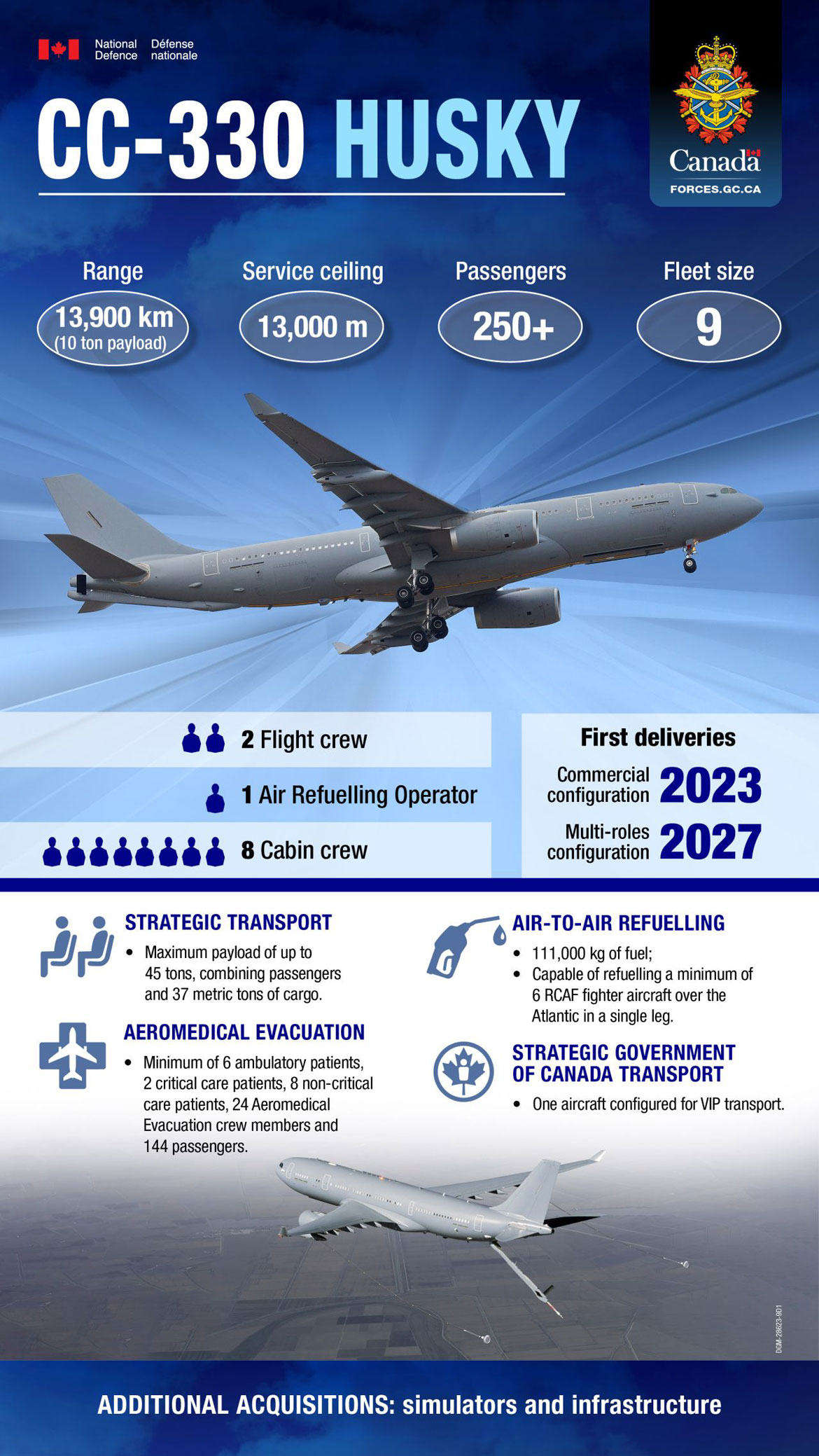
July 25, 2023 – Today, on behalf of the Honourable Helena Jaczek, Minister of Public Services and Procurement, the Honourable Anita Anand, Minister of National Defence announced that the Government of Canada has awarded a contract to Airbus Defence and Space S.A. to replace the Royal Canadian Air Force’s CC-150 Polaris fleet.
Following an open, fair and transparent procurement process, it was determined that Airbus Defence and Space S.A. was the only qualified supplier that met the project requirements.
The contract with Airbus, valued at approximately $3.6 billion (excluding taxes), is for a fleet of nine aircraft. It includes the acquisition of four new Airbus A330 Multi Role Tanker Transport aircraft along with the conversion of five used A330-200 aircraft. These used aircraft were procured through separate procurement processes with significant cost savings and provide best value for Canadians.
The existing CC-150 Polaris fleet has been operating for over thirty years and is nearing the end of its service life. The new fleet is anticipated to operate into the 2050s.
As a multi-role aircraft, the CC-330 will provide the RCAF with increased flexibility to fulfill a variety of missions with the same aircraft. The primary role of the fleet will be air-to-air refuelling, while simultaneously being equipped to airlift large numbers of Canadian Armed Forces personnel and their equipment in support of operations and training activities within Canada, and around the world. With some reconfiguration, this multi-role aircraft can be equipped to perform specialized aeromedical evacuation missions. Additionally, the CC-330 aircraft will increase the RCAF’s ability to respond to unexpected operational requirements such as domestic or international emergencies or humanitarian relief missions. One of the used aircraft will be configured to provide secure transport of high-ranking government officials.
Once delivered, these aircraft will be designated as the CC-330 Husky and will improve the Royal Canadian Air Force’s flexibility, responsiveness, interoperability with allies and partners, communications security and self-protection. They will also allow Canada to meet future challenges and ongoing commitments to collective defence with our allies through the North Atlantic Treaty Organization and to the defence of North America through North American Aerospace Defense Command (NORAD) operations.
The additional air-to-air refuelling initiative is an integral part of Canada’s investments in NORAD modernization that will allow the RCAF to enhance Canadian sovereignty operations, including in the Arctic.
The aircraft will be able to refuel not only current and future Royal Canadian Air Force (RCAF) fighter aircraft including the F-35, but also fighter aircraft used by the US as part of NORAD and by NATO partners.
The acquisition of this capability represents a significant opportunity for Canada’s aerospace and defence industry. Through the Industrial and Technological Benefits Policy, Airbus will expand their presence in Canada, contribute to the growth of Canadian supply chains and create highly skilled jobs.
canada.ca
Following an open, fair and transparent procurement process, it was determined that Airbus Defence and Space S.A. was the only qualified supplier that met the project requirements.
The contract with Airbus, valued at approximately $3.6 billion (excluding taxes), is for a fleet of nine aircraft. It includes the acquisition of four new Airbus A330 Multi Role Tanker Transport aircraft along with the conversion of five used A330-200 aircraft. These used aircraft were procured through separate procurement processes with significant cost savings and provide best value for Canadians.
The existing CC-150 Polaris fleet has been operating for over thirty years and is nearing the end of its service life. The new fleet is anticipated to operate into the 2050s.
As a multi-role aircraft, the CC-330 will provide the RCAF with increased flexibility to fulfill a variety of missions with the same aircraft. The primary role of the fleet will be air-to-air refuelling, while simultaneously being equipped to airlift large numbers of Canadian Armed Forces personnel and their equipment in support of operations and training activities within Canada, and around the world. With some reconfiguration, this multi-role aircraft can be equipped to perform specialized aeromedical evacuation missions. Additionally, the CC-330 aircraft will increase the RCAF’s ability to respond to unexpected operational requirements such as domestic or international emergencies or humanitarian relief missions. One of the used aircraft will be configured to provide secure transport of high-ranking government officials.
Once delivered, these aircraft will be designated as the CC-330 Husky and will improve the Royal Canadian Air Force’s flexibility, responsiveness, interoperability with allies and partners, communications security and self-protection. They will also allow Canada to meet future challenges and ongoing commitments to collective defence with our allies through the North Atlantic Treaty Organization and to the defence of North America through North American Aerospace Defense Command (NORAD) operations.
The additional air-to-air refuelling initiative is an integral part of Canada’s investments in NORAD modernization that will allow the RCAF to enhance Canadian sovereignty operations, including in the Arctic.
The aircraft will be able to refuel not only current and future Royal Canadian Air Force (RCAF) fighter aircraft including the F-35, but also fighter aircraft used by the US as part of NORAD and by NATO partners.
The acquisition of this capability represents a significant opportunity for Canada’s aerospace and defence industry. Through the Industrial and Technological Benefits Policy, Airbus will expand their presence in Canada, contribute to the growth of Canadian supply chains and create highly skilled jobs.
canada.ca

From: Chris Goss, Marlow, Bucks
Subject: Pet Hates
Hi Tony
1. Mk 11 Hydraulic rigs-due to a u/s Tornado, we had to onload, offload, onload, offload. Whoever came up the idea that this was air portable should have been shot. Just checked logbook - Exercise Bar Frost at Bodo 25-26 Sep 86.
2. Air Portable Air Workshops - get it wrong and no sick bag to spin the wheels, you were in a whole world of pain (you had to spin the hard wheels when on the aircraft floor and by putting the wheel on the bag and spinning it made it easy and didn't damage the floor!).
3. Lightning ventral tank trolley - only ever did one of these and that took all of the pax to physically manhandle it onto the C-130 on, if I recall, wheels that were solid. (Tactical Leadership Programme 25 April 1986).
4. Prima-donna VC10 aircrew. Thankful the old guard were becoming less when I was DAMO Brize and then on UKMAMS but I did have some run-ins in my time (less said the better!).
Chris
Subject: Pet Hates
Hi Tony
1. Mk 11 Hydraulic rigs-due to a u/s Tornado, we had to onload, offload, onload, offload. Whoever came up the idea that this was air portable should have been shot. Just checked logbook - Exercise Bar Frost at Bodo 25-26 Sep 86.
2. Air Portable Air Workshops - get it wrong and no sick bag to spin the wheels, you were in a whole world of pain (you had to spin the hard wheels when on the aircraft floor and by putting the wheel on the bag and spinning it made it easy and didn't damage the floor!).
3. Lightning ventral tank trolley - only ever did one of these and that took all of the pax to physically manhandle it onto the C-130 on, if I recall, wheels that were solid. (Tactical Leadership Programme 25 April 1986).
4. Prima-donna VC10 aircrew. Thankful the old guard were becoming less when I was DAMO Brize and then on UKMAMS but I did have some run-ins in my time (less said the better!).
Chris


From: Martyn (Woody) Harrison, Plymouth
Subject: Pet Peeves
Hi Tony,
My pet peeve like many I am sure, was:
Dragging nets, especially wet nets in the hangar and some Jack barsteward had left the seconds done up and corners still tied up, made a rubbish job even more annoying.
Woody
Subject: Pet Peeves
Hi Tony,
My pet peeve like many I am sure, was:
Dragging nets, especially wet nets in the hangar and some Jack barsteward had left the seconds done up and corners still tied up, made a rubbish job even more annoying.
Woody


From: John Leek, La Ronde
Subject: Pet Hates
Hi Tony,
Northolt 1964-68. Driving round peri-track on route to section and seeing a cargo Indian Air Force Super Constellation parked up.
Subject: Pet Hates
Hi Tony,
Northolt 1964-68. Driving round peri-track on route to section and seeing a cargo Indian Air Force Super Constellation parked up.

Offloading wasn’t too bad (although crew always refused to use the pogo stick and an airborne nosewheel could be a problem).
Loading was the hate!
Still no pogo stick! Outbound loads were always lashed down with ropes and the rope used was brand-new super rough hemp/coconut fibre mix that tore up gloves and then skin. Because the new ropes came in prepacked bundles, it was super difficult to get them straight enough to use. Also, to cut them into useable lengths, any knife was immediately blunted but we had an old machete specially sharpened by workshops which could last a days’ use but was potentially deadly.
Last ( but not least) the crew would arrive with van loads of personal shopping and always demanded the load to be moved and relashed to make room.
So, when the kite departed, we would heave a sigh of relief (especially because we often check-weighed the cargo and the indicated weights were usually way out).
John
Loading was the hate!
Still no pogo stick! Outbound loads were always lashed down with ropes and the rope used was brand-new super rough hemp/coconut fibre mix that tore up gloves and then skin. Because the new ropes came in prepacked bundles, it was super difficult to get them straight enough to use. Also, to cut them into useable lengths, any knife was immediately blunted but we had an old machete specially sharpened by workshops which could last a days’ use but was potentially deadly.
Last ( but not least) the crew would arrive with van loads of personal shopping and always demanded the load to be moved and relashed to make room.
So, when the kite departed, we would heave a sigh of relief (especially because we often check-weighed the cargo and the indicated weights were usually way out).
John
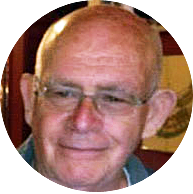
Brize Norton: A Brief Guide To The UK's Largest RAF Station
Brize Norton has become the largest RAF base - home to all transport and refueling aircraft.
RAF Brize Norton in Oxfordshire is the largest RAF station in the UK. It is the main base today for the RAFs Air Mobility Force – including transport, logistics, parachuting, and air refueling operations. Today it is the home to the Airbus A400M, C-17 Globemaster, and Voyager (A330 MRTT) aircraft, but historically has seen many more types.
simpleflying.com
simpleflying.com
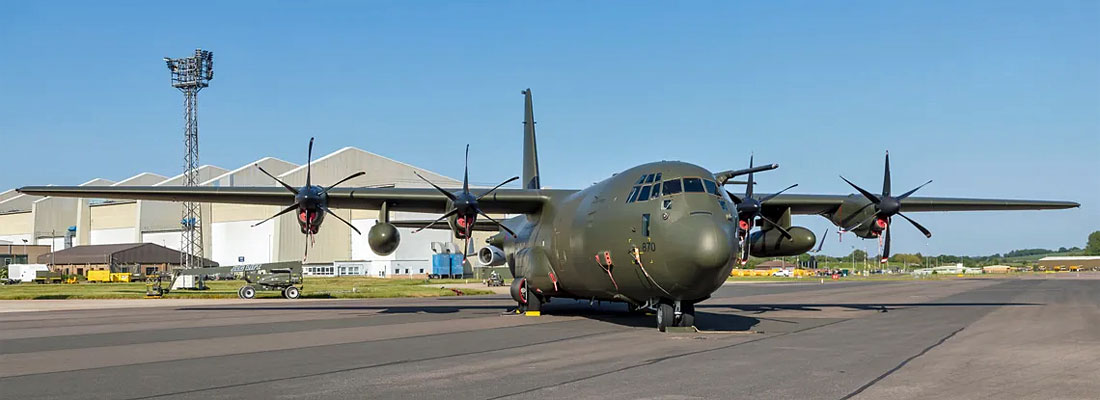
Opening in 1937, with extensive wartime operations
The Royal Air Force airfield at Brize Norton opened in August 1937 as a base for flying training. Notably, this was before the Second World War, when many of the other bases were developed.
Use expanded during the war, with both logistical and operational roles. Flight training operations remained at Brize Norton, and were joined by several other squadrons. This initially included the Bristol Blenheim bomber aircraft and the Hawker Hurricane fighter.
Later on, aircraft at the base included the Armstrong Whitworth Albemarle (used mostly for transport, glider operations, and parachuting) and the Handley Page Halifax bomber. These aircraft supported many wartime missions, including Operation Market Garden, D-Day operations, and the airborne landings at Arnhem. The Albemarle is pictured below at Brize Norton with an Airspeed Horsa glider.
Use expanded during the war, with both logistical and operational roles. Flight training operations remained at Brize Norton, and were joined by several other squadrons. This initially included the Bristol Blenheim bomber aircraft and the Hawker Hurricane fighter.
Later on, aircraft at the base included the Armstrong Whitworth Albemarle (used mostly for transport, glider operations, and parachuting) and the Handley Page Halifax bomber. These aircraft supported many wartime missions, including Operation Market Garden, D-Day operations, and the airborne landings at Arnhem. The Albemarle is pictured below at Brize Norton with an Airspeed Horsa glider.

Use by the United States Air Force
Military operations from Brize Norton obviously declined after the war, but other use for training and transport expanded, with several squadrons moving in. Brize Norton’s role changed dramatically in the early 1950s, with the United States basing aircraft there. It became a cold war base for US bombers, with the US Air Force taking operational control of the base in December 1952. This role saw significant infrastructure upgrades to the airport, including lengthening the runway to 9,000 feet (1,740 meters) and improvement of taxiways.
Aircraft based at Brize Norton (usually on rotations) during this time included Convair B-36 Peacemaker bombers, the Boeing B-29 Superfortress, Boeing B-47 Stratojet, KC-97 Stratofreighter, KC-135 Stratotankers, and the B-52 Stratofortress (pictured below).
Aircraft based at Brize Norton (usually on rotations) during this time included Convair B-36 Peacemaker bombers, the Boeing B-29 Superfortress, Boeing B-47 Stratojet, KC-97 Stratofreighter, KC-135 Stratotankers, and the B-52 Stratofortress (pictured below).
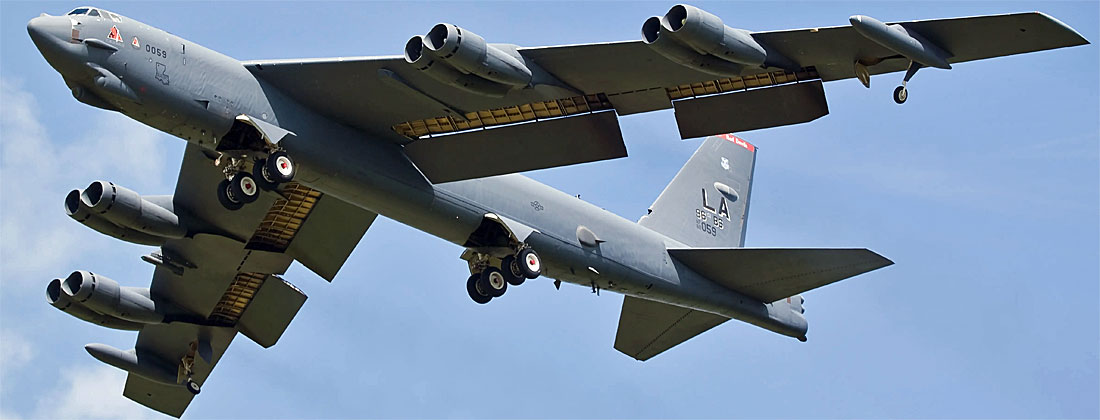
Expansion from the 1960s
Control of the base returned to the UK RAF in April 1965. The base was developed as a strategic transport airfield to support the operation of some of the large aircraft entering service at that time. The first UK squadrons to return to Brize Norton operated the Short Belfast turboprop freighter, the Vickers VC-10 jet transport aircraft (pictured below), and the Bristol Britannia.
The 1980s saw other squadrons formed (or re-formed) and other aircraft types at the base. This included the Boeing C-135 Stratotanker, C-130 Hercules, further Vickers VC-10 aircraft converted for air refueling operations (some ex-British Airways), and the Lockheed L-1011 TriStar (taken on largely to support operations and expansion in the Falklands Islands).
The 1980s saw other squadrons formed (or re-formed) and other aircraft types at the base. This included the Boeing C-135 Stratotanker, C-130 Hercules, further Vickers VC-10 aircraft converted for air refueling operations (some ex-British Airways), and the Lockheed L-1011 TriStar (taken on largely to support operations and expansion in the Falklands Islands).
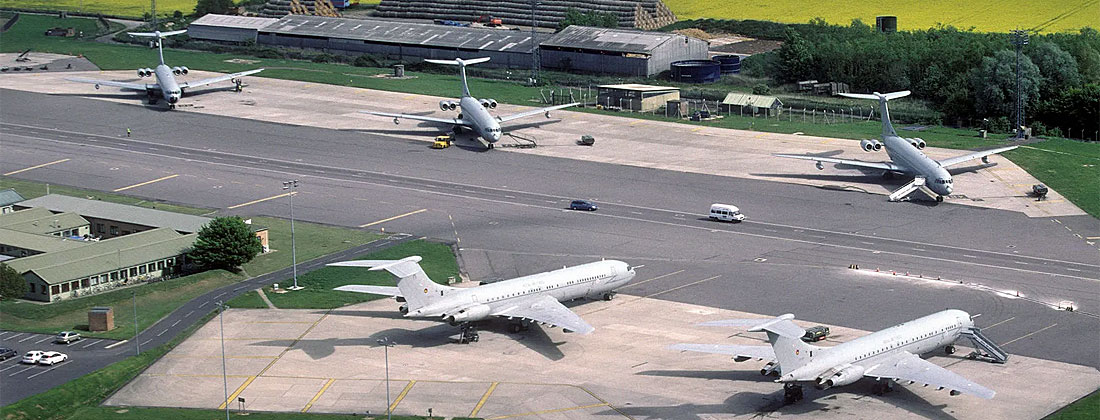
Brize Norton’s miltary roles today
Brize Norton is firmly established today as the main strategic and air transport base in the UK. This role was particularly expanded after the closure of RAF Lyneham in 2012. Lyneham had also been a major transport base, home to the entire C-130 Hercules fleet, amongst other aircraft.
Today, Brize Norton houses all the RAFs fixed-wing transport fleet, across several operational squadrons. This includes the Airbus A400M Atlas, the Boeing C-17 Globemaster III, and the Voyager KC2/KC3 transport and tanker aircraft. The long-serving Hercules C-130 was retired in 2023. These aircraft perform all of the passenger and equipment transport, refueling, and parachuting of the RAF. There are also several specialized units, including the parachute training school and the Falcons parachute display team.
Today, Brize Norton houses all the RAFs fixed-wing transport fleet, across several operational squadrons. This includes the Airbus A400M Atlas, the Boeing C-17 Globemaster III, and the Voyager KC2/KC3 transport and tanker aircraft. The long-serving Hercules C-130 was retired in 2023. These aircraft perform all of the passenger and equipment transport, refueling, and parachuting of the RAF. There are also several specialized units, including the parachute training school and the Falcons parachute display team.
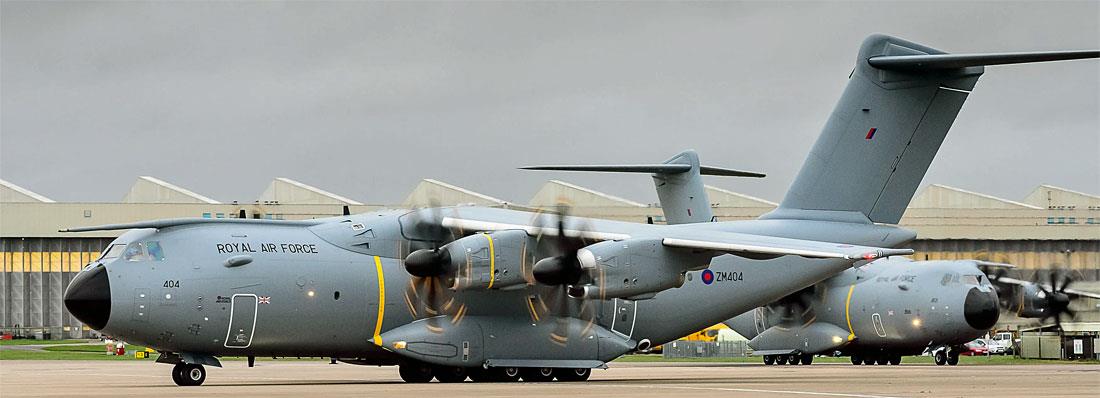
Partial civilian use
Brize Norton stands apart from any other UK RAF base with a joint civilian role. It is the only military base that allows civilian flights and transportation, with regular flights to the Falklands Islands. These are operated by a private UK company (AirTanker) using the A330 Voyager aircraft. These flights usually operate two times per week, and each flight has a quota of tickets available for civilians wanting to visit the islands.
Other companies have operated this air link in the past – including UK airline Flyglobespan (in 2008 and 2009), and after it collapsed Air Tahiti Nui and Titan Airways for a short time.
Other companies have operated this air link in the past – including UK airline Flyglobespan (in 2008 and 2009), and after it collapsed Air Tahiti Nui and Titan Airways for a short time.
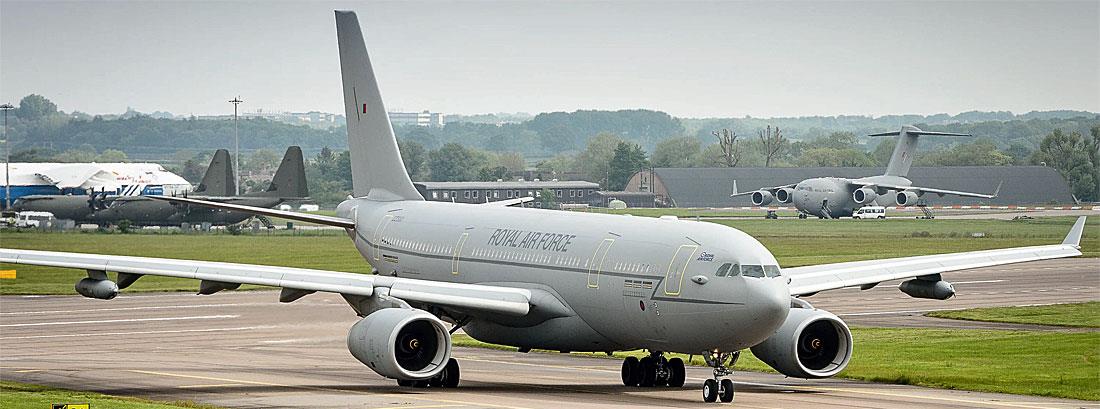

From: David Powell, Princes Risborough, Bucks
Subject: Pet Hates
Hi Tony
My pet hate from my time enjoying MAMS was the prized pinnacle of Service Catering Cuisine – the Lyneham meal box. Served up in a plain white cardboard box about the size of a six year old’s shoe box.
Usually encountered on a PCF Brit. These would have three of four rows of backward facing seats at the rear of the cabin. Most of the aircraft would then be filled with what appeared at first sight to b a collection of scrap metal, which on closer inspection comprised the odd ground power unit, a towing arm or two, a few wheels, on oil dispensing thingy, a couple of cockpit ladders and almost certainly a bicycle; together with an assortment of cartons and blue boxes. All secured in a cat’s cradle of chains, strops and tape. Yes, it is the positioning package for a fighter squadron exchange in a couple of day’s time.
We are heading for a typical exotic MAMS task destination, another cold wet airfield, somewhere. Our task will be to unload that collection of historic engineering and quite possibly pick up a backload, such as the end of tour Air Attache’s sports car. Also, although scheduled for a 4 hour turn round, for some never explained reason we are already running 2½ hours late. Moreover, we have been told in no uncertain terms, that we will be leaving our destination on schedule because: a, the sharp end will be running out of crew duty hours or b, more likely, some of the crew have to get back for the Summer Ball. So no chance of a ground meal before the return trip. Meanwhile, we can settle down, enjoy the views and look forward to our Lyneham meal box. These would usually be handed out to the mouth-watering background aroma of the aircrews’ coq au vin or beef bourguignon being reheated in the galley.
For some reason, apart from the team’s resident gannet, there is no rush to open our white boxes of culinary surprises, because regardless of what time of day, the destination, what meal it is intended to replace, it is always the same menu de jour. There will be an orange with the peel previously araldited in place. Next, a minute triangle of what could be soap but is in fact cheese, wrapped in tin foil designed to challenge the most experience safe breaker. Not forgetting the small block of ersatz ‘butter’ delivered to the aircraft straight from the deep freeze. The next item to emerge is the most challenging, and required many Britannia hours to master. Carefully wrapped in unbreakable cellophane, it is a package containing not one but two beautifully dry cream crackers, hopefully still intact. Sadly, by the time they are eventually exposed to the cabin air, the unpacking will have reduced them to a jig saw puzzle of little bits.
There were, of course other regular delicacies in the Lyneham meal box, but the only item still stamped indelibly on the old gray cells was what was claimed to be a chicken drum stick; once upon a time cooked, and now served cold. Actually, such was their small size, it was claimed, allegedly, that they were sourced from a farm near what is now called Royal Wootton Bassett which specialized in rearing pigeons. In the 60s these were all that were left after the breast fillets had gone to the sergeants' mess and the left over chicken thighs have been shared between the Airman and Officer dining rooms (unless it was field sport season when the Officers' Mess existed largely on lead shot riddled grouse, pheasant and jugged hare!).
Happy Days, Yum Yum!
David Powell
F Team UK MAMS, RAF Abingdon 1967-69
(Editor's note: The terminology generally used amongst the other ranks for the Lyneham Meal Boxes was “Gobbly Box” and yes, they were predictably awful. However, I do recall during Operation Spearhead into Northern Ireland in August ’69, with an arrival every 15 minutes, we were literally running from aircraft to aircraft for hours and hours on end without a break. It was at this time our only food intake was what we could hastily salvage from the partially consumed gobbly boxes left on the seats of the aircraft – and we were very grateful! TG).
Subject: Pet Hates
Hi Tony
My pet hate from my time enjoying MAMS was the prized pinnacle of Service Catering Cuisine – the Lyneham meal box. Served up in a plain white cardboard box about the size of a six year old’s shoe box.
Usually encountered on a PCF Brit. These would have three of four rows of backward facing seats at the rear of the cabin. Most of the aircraft would then be filled with what appeared at first sight to b a collection of scrap metal, which on closer inspection comprised the odd ground power unit, a towing arm or two, a few wheels, on oil dispensing thingy, a couple of cockpit ladders and almost certainly a bicycle; together with an assortment of cartons and blue boxes. All secured in a cat’s cradle of chains, strops and tape. Yes, it is the positioning package for a fighter squadron exchange in a couple of day’s time.
We are heading for a typical exotic MAMS task destination, another cold wet airfield, somewhere. Our task will be to unload that collection of historic engineering and quite possibly pick up a backload, such as the end of tour Air Attache’s sports car. Also, although scheduled for a 4 hour turn round, for some never explained reason we are already running 2½ hours late. Moreover, we have been told in no uncertain terms, that we will be leaving our destination on schedule because: a, the sharp end will be running out of crew duty hours or b, more likely, some of the crew have to get back for the Summer Ball. So no chance of a ground meal before the return trip. Meanwhile, we can settle down, enjoy the views and look forward to our Lyneham meal box. These would usually be handed out to the mouth-watering background aroma of the aircrews’ coq au vin or beef bourguignon being reheated in the galley.
For some reason, apart from the team’s resident gannet, there is no rush to open our white boxes of culinary surprises, because regardless of what time of day, the destination, what meal it is intended to replace, it is always the same menu de jour. There will be an orange with the peel previously araldited in place. Next, a minute triangle of what could be soap but is in fact cheese, wrapped in tin foil designed to challenge the most experience safe breaker. Not forgetting the small block of ersatz ‘butter’ delivered to the aircraft straight from the deep freeze. The next item to emerge is the most challenging, and required many Britannia hours to master. Carefully wrapped in unbreakable cellophane, it is a package containing not one but two beautifully dry cream crackers, hopefully still intact. Sadly, by the time they are eventually exposed to the cabin air, the unpacking will have reduced them to a jig saw puzzle of little bits.
There were, of course other regular delicacies in the Lyneham meal box, but the only item still stamped indelibly on the old gray cells was what was claimed to be a chicken drum stick; once upon a time cooked, and now served cold. Actually, such was their small size, it was claimed, allegedly, that they were sourced from a farm near what is now called Royal Wootton Bassett which specialized in rearing pigeons. In the 60s these were all that were left after the breast fillets had gone to the sergeants' mess and the left over chicken thighs have been shared between the Airman and Officer dining rooms (unless it was field sport season when the Officers' Mess existed largely on lead shot riddled grouse, pheasant and jugged hare!).
Happy Days, Yum Yum!
David Powell
F Team UK MAMS, RAF Abingdon 1967-69
(Editor's note: The terminology generally used amongst the other ranks for the Lyneham Meal Boxes was “Gobbly Box” and yes, they were predictably awful. However, I do recall during Operation Spearhead into Northern Ireland in August ’69, with an arrival every 15 minutes, we were literally running from aircraft to aircraft for hours and hours on end without a break. It was at this time our only food intake was what we could hastily salvage from the partially consumed gobbly boxes left on the seats of the aircraft – and we were very grateful! TG).


From: Chas Clark, Sprucedale, ON
Subject: Pet Hates
Hi Tony,
My pet hate was the little white box that was prepared by in-flight catering at RAF Lyneham. It contained 2 Jacob cream crackers , a foiled petite wedge of soft cheese, a sandwich and, if you were lucky, an apple. The sandwich, if you can call it that, had bread so light it could float, hence the box, and a micrometer thin piece of meat vaguely identified as ham. This to sustain you from Lyneham to Gander and before UKMAMS teams qualified for crew rations.
My other pet hate was the shims having to be replaced regularly on the Britannia Frieght Lift Platform (BFLP). Thanks Tony and keep up the good work.
Regards,
Chas
Subject: Pet Hates
Hi Tony,
My pet hate was the little white box that was prepared by in-flight catering at RAF Lyneham. It contained 2 Jacob cream crackers , a foiled petite wedge of soft cheese, a sandwich and, if you were lucky, an apple. The sandwich, if you can call it that, had bread so light it could float, hence the box, and a micrometer thin piece of meat vaguely identified as ham. This to sustain you from Lyneham to Gander and before UKMAMS teams qualified for crew rations.
My other pet hate was the shims having to be replaced regularly on the Britannia Frieght Lift Platform (BFLP). Thanks Tony and keep up the good work.
Regards,
Chas

From: Trevor Porter, Birgu
Subject: Pet Hates
Hi Tony,
One of my Pet Hates during my time on MAMS were the Fighter Squadron moves. They always took so much clutter with them that took a lifetime to tie down and all the dangerous air cargo (DAC) they needed for the detachment. They didn't crop up too often on MAMS but during my posting to Luqa we used to get many during the summer months.
My other Pet Hate was not related to MAMS but during my posting to Luqa, Malta (which has now been my home for the last 21 years), I got sent down to work in the Joint Services Port Unit (JSPU) at Pinto Wharf in the Grand Harbour. My job was dealing with unaccompanied luggage (deep sea boxes we called them in the day). At first it felt like a dream job because there was so little to do. When a ship arrived, my job was to inform all the units on the island that the boxes were available for customs clearance, which was twice a week, and then dispatch my team of local labourers to do the delivery on a daily basis. The rest of the day I just manned the phone.
After a few weeks, with having so little to do, boredom set in. A monkey could be trained to do the job, which might relate to why I was selected! Thankfully after a few months I was returned back to Luqa working with aircraft, which after all is the reason, I joined the Air Force and not the Navy.
Strange thing is that last week my family visited me for my Granddaughter's 18th birthday. We decided to go for her birthday meal on what's now called The Valletta Water Front where the large cruise ships tied up (the Old Pinto Wharf ). The restaurant we chose also used to be the old JSPU building. I would never have imagined all those years ago that I would be sitting eating a meal with my family at exactly the same location where I used to work!
A couple of pictures are attached, there's been many changes since the British Forces left.
Best regards and many thanks for the work you do in producing the newsletter.
Trevor
Subject: Pet Hates
Hi Tony,
One of my Pet Hates during my time on MAMS were the Fighter Squadron moves. They always took so much clutter with them that took a lifetime to tie down and all the dangerous air cargo (DAC) they needed for the detachment. They didn't crop up too often on MAMS but during my posting to Luqa we used to get many during the summer months.
My other Pet Hate was not related to MAMS but during my posting to Luqa, Malta (which has now been my home for the last 21 years), I got sent down to work in the Joint Services Port Unit (JSPU) at Pinto Wharf in the Grand Harbour. My job was dealing with unaccompanied luggage (deep sea boxes we called them in the day). At first it felt like a dream job because there was so little to do. When a ship arrived, my job was to inform all the units on the island that the boxes were available for customs clearance, which was twice a week, and then dispatch my team of local labourers to do the delivery on a daily basis. The rest of the day I just manned the phone.
After a few weeks, with having so little to do, boredom set in. A monkey could be trained to do the job, which might relate to why I was selected! Thankfully after a few months I was returned back to Luqa working with aircraft, which after all is the reason, I joined the Air Force and not the Navy.
Strange thing is that last week my family visited me for my Granddaughter's 18th birthday. We decided to go for her birthday meal on what's now called The Valletta Water Front where the large cruise ships tied up (the Old Pinto Wharf ). The restaurant we chose also used to be the old JSPU building. I would never have imagined all those years ago that I would be sitting eating a meal with my family at exactly the same location where I used to work!
A couple of pictures are attached, there's been many changes since the British Forces left.
Best regards and many thanks for the work you do in producing the newsletter.
Trevor

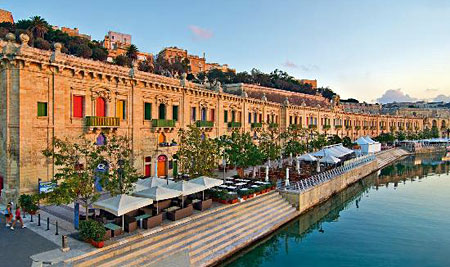
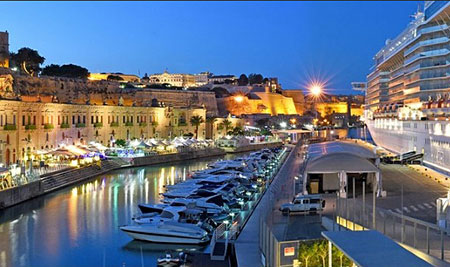

From: Stephen Davey, Tadcaster, North Yorks
Subject: Pet Hates
Tony,
My pet hate during my time on Movements was having to crawl under Army vehicles which had come back from exercises abroad to undo the tensioners & chains underneath. The vehicles were inevitably covered in all sorts of crap including mud, oil & grease etc.
Happy days?
Regards, Steve
Subject: Pet Hates
Tony,
My pet hate during my time on Movements was having to crawl under Army vehicles which had come back from exercises abroad to undo the tensioners & chains underneath. The vehicles were inevitably covered in all sorts of crap including mud, oil & grease etc.
Happy days?
Regards, Steve


1 Air Mobility Wing

From: Andy Spinks, Falmouth, Cornwall
Subject: Pet Hates
Hi Tony,
I don’t suppose ‘Loadmasters’ is allowed as a topic! Actually, to be fair, there were some great ones (Mick Bedford, ex UKMAMS of course, Kevin Dunn and Pete Scott spring to mind).
But my real pet hate was when the whole ‘enterprise’ did not work as a team. This might have been when the MAMS team on a task was treated in an ‘us and them’ way in spite of our best efforts to be part of the crew. But these occasions were thankfully pretty rare, although it was brought into sharp focus when flying as a TriStar despatcher with a BA operating crew. How much better the RAF operation would have been if we had all worked as one team - as the BA crews did.
Back to RAF operations. What I always thought was unnecessary was the sequential activity to get an aircraft off on time, especially thinking about my time at Calgary watching how Air Canada performed and later at Brize working with the BA charter 747s.
At Brize, the VC10s often came late off tech deadline and we were the meat in the sandwich trying to get the aircraft away on time. But the ALM would not normally accept the pax until all the movers were off the aircraft and he/she had checked the holds. Only then could we board the pax and wait for the headcount (another pet hate on a full pax aircraft: why not just count any empty seats rather than the number of heads?). Then all 4 engines needed to be started before the captain would request a push-back. And, after take-off, the flight deck crew often reported that it was a movers’ delay because we had not finished the loading or boarded the pax on time – even though we got the aircraft late from the engineers.
A couple of times I asked the crew to start engines from the APU while pushing back – I mean, how often did all 4 engines not start? And, even if there was a problem, all they needed to do was to be pulled back onto the stand. Thinking about the way airlines do it:
• The holds are still being loaded as the pax embark; the ground crew are trusted to close the holds. We could have done that.
• The paperwork is being finalised as the pax are boarding.
• Airlines start engines (usually just one of them initially) while pushing back or even while the tug is being disconnected.
• And they shut down half the engines as they taxy in.
I wonder how much fuel could have been saved if this had been done as SOP in the RAF. And how more frequently a task would have left on time. There were a lot of efficiencies which were apparent when we worked with the BA TriStar and, later, 747 crews. But they sadly never happened with the RAF fleet in my time. Hopefully Voyager has brought in some better practices.
Slight rant on some of my pet hates over!
Best regards, Andy
Subject: Pet Hates
Hi Tony,
I don’t suppose ‘Loadmasters’ is allowed as a topic! Actually, to be fair, there were some great ones (Mick Bedford, ex UKMAMS of course, Kevin Dunn and Pete Scott spring to mind).
But my real pet hate was when the whole ‘enterprise’ did not work as a team. This might have been when the MAMS team on a task was treated in an ‘us and them’ way in spite of our best efforts to be part of the crew. But these occasions were thankfully pretty rare, although it was brought into sharp focus when flying as a TriStar despatcher with a BA operating crew. How much better the RAF operation would have been if we had all worked as one team - as the BA crews did.
Back to RAF operations. What I always thought was unnecessary was the sequential activity to get an aircraft off on time, especially thinking about my time at Calgary watching how Air Canada performed and later at Brize working with the BA charter 747s.
At Brize, the VC10s often came late off tech deadline and we were the meat in the sandwich trying to get the aircraft away on time. But the ALM would not normally accept the pax until all the movers were off the aircraft and he/she had checked the holds. Only then could we board the pax and wait for the headcount (another pet hate on a full pax aircraft: why not just count any empty seats rather than the number of heads?). Then all 4 engines needed to be started before the captain would request a push-back. And, after take-off, the flight deck crew often reported that it was a movers’ delay because we had not finished the loading or boarded the pax on time – even though we got the aircraft late from the engineers.
A couple of times I asked the crew to start engines from the APU while pushing back – I mean, how often did all 4 engines not start? And, even if there was a problem, all they needed to do was to be pulled back onto the stand. Thinking about the way airlines do it:
• The holds are still being loaded as the pax embark; the ground crew are trusted to close the holds. We could have done that.
• The paperwork is being finalised as the pax are boarding.
• Airlines start engines (usually just one of them initially) while pushing back or even while the tug is being disconnected.
• And they shut down half the engines as they taxy in.
I wonder how much fuel could have been saved if this had been done as SOP in the RAF. And how more frequently a task would have left on time. There were a lot of efficiencies which were apparent when we worked with the BA TriStar and, later, 747 crews. But they sadly never happened with the RAF fleet in my time. Hopefully Voyager has brought in some better practices.
Slight rant on some of my pet hates over!
Best regards, Andy


From: Ian Berry, Eastleaze, Swindon, Wilts
Subject: New Terminal for Akrotiri
Hi Tony,
I found your item on the latest construction of a New Passenger Terminal at RAF Akrotiri informative as I wasn't aware. I, like yourself and the surviving mature Movers will remember the original Terminal. This became part of the Supply Squadron's R&D after the construction of the "New" Terminal. I arrived at Akrotiri in 1977 for a three year tour, soon after it was built. I only hope the Architect of the latest Terminal is not related to the previous designer.
There was one great faux pas created with the construction of the previous one. In the 70s we had a fantastic loading aid known as a Gamecock. It could be loaded with passenger baggage which was stowed on shelves either side within the vehicle. The vehicle itself had a "reachable" conveyor belt which would easily align against the rear and vent baggage hatches on the VC10 - so simple and life made so easy. However, the designer of the New Terminal had not considered the height of this vehicle and the result was it was 6 inches too high to be driven under the Terminal.
As a result, this oversight put our baggage handling back 20 years! The Gamecocks were redundant! I only hope that the latest Terminal design has taken into consideration the height of the latest baggage and freight handling equipment and we are back in the 21st Century?
Ian
Subject: New Terminal for Akrotiri
Hi Tony,
I found your item on the latest construction of a New Passenger Terminal at RAF Akrotiri informative as I wasn't aware. I, like yourself and the surviving mature Movers will remember the original Terminal. This became part of the Supply Squadron's R&D after the construction of the "New" Terminal. I arrived at Akrotiri in 1977 for a three year tour, soon after it was built. I only hope the Architect of the latest Terminal is not related to the previous designer.
There was one great faux pas created with the construction of the previous one. In the 70s we had a fantastic loading aid known as a Gamecock. It could be loaded with passenger baggage which was stowed on shelves either side within the vehicle. The vehicle itself had a "reachable" conveyor belt which would easily align against the rear and vent baggage hatches on the VC10 - so simple and life made so easy. However, the designer of the New Terminal had not considered the height of this vehicle and the result was it was 6 inches too high to be driven under the Terminal.
As a result, this oversight put our baggage handling back 20 years! The Gamecocks were redundant! I only hope that the latest Terminal design has taken into consideration the height of the latest baggage and freight handling equipment and we are back in the 21st Century?
Ian
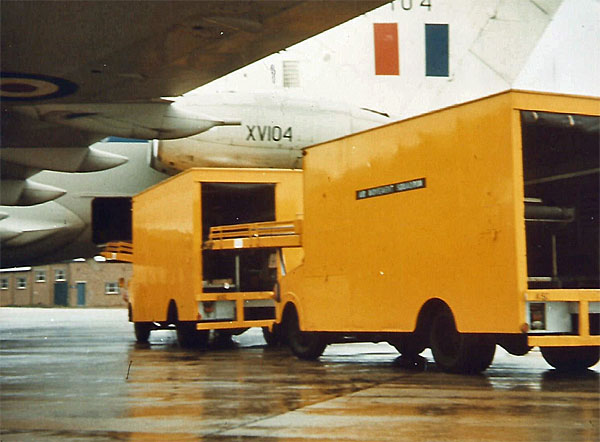


From: Barry Tappenden, Shortstown, Beds
Subject: Pet Hates
Good evening Tony,
Not so much a Pet Hate as a moan! Whenever a “jolly” came up it was always given to the Officers or SNCO’s.
Barry
Subject: Pet Hates
Good evening Tony,
Not so much a Pet Hate as a moan! Whenever a “jolly” came up it was always given to the Officers or SNCO’s.
Barry



From: Clive Price, Brecon
Subject: Team Transport Memories
Hi Tony,
Team Land Rovers - what a good subject! I was a motorcyclist and did not drive (except the ConDec!). I recall returning from Scotland to base, some 300 miles, with the late Bob Turner driving and myself in the front centre seat.
At about halfway Bob declared he was sleepy and to save stopping I was to slide my foot over and keep the pedal to the metal and steer as well, staying in lane. He nodded off and woke up twenty minutes later refreshed and ready to take over. That was my first driving lesson.
My second story concerns Cpl. Dennis Heyden, driving around our old airfield at Abingdon, stopping at the traffic lights, he slammed it into second gear and the gear lever snapped off. He kept the clutch in and and made it to the M.T. office.
In the warrant officer's office he held out the lever and said, "Can you tell me which one is reverse sir?" With a roar he was booted out, trying to hide a smile.
Taff Price
F Team (66/70)
Subject: Team Transport Memories
Hi Tony,
Team Land Rovers - what a good subject! I was a motorcyclist and did not drive (except the ConDec!). I recall returning from Scotland to base, some 300 miles, with the late Bob Turner driving and myself in the front centre seat.
At about halfway Bob declared he was sleepy and to save stopping I was to slide my foot over and keep the pedal to the metal and steer as well, staying in lane. He nodded off and woke up twenty minutes later refreshed and ready to take over. That was my first driving lesson.
My second story concerns Cpl. Dennis Heyden, driving around our old airfield at Abingdon, stopping at the traffic lights, he slammed it into second gear and the gear lever snapped off. He kept the clutch in and and made it to the M.T. office.
In the warrant officer's office he held out the lever and said, "Can you tell me which one is reverse sir?" With a roar he was booted out, trying to hide a smile.
Taff Price
F Team (66/70)
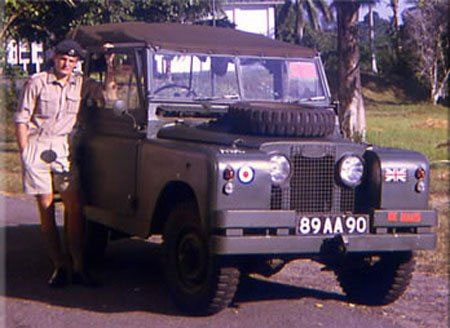
Team Land Rover Circa 1970 - (TG in Changi)


From: Len Bowen, Chisholm, ACT
Subject: Pet Hates
G’Day Tony,
Firstly, on your ‘Pet Hate’ of long rides in the cramped back of the Team Land Rover while the Boss and SNCO sat up front... Mea Culpa, Mea Maxima Culpa! Subjected my FEAF MAMS boys to several such trips including:
• Kuantan – Seletar (215 miles) in August 1966
• Gong Kedak – Seletar (430 miles) in September 1966
• Malacca – Seletar (240 miles) in November 1966
In my own defence:
On the Gong Kedak redeployment, we were supposed to travel back to Singapore on an RACT LCH, but when we found that while I had a single cabin in ‘officers’ land’ and my Flt Sgt had a shared cabin with the senior ratings, the rest of my team were expected to sleep on deck or below with the lascar crew, so we all elected to RTU by road instead.
On the Malacca (Terendak Camp) redeployment we were supposed to return to Seletar by air, but the whole exercise – ‘Winged Haggis 66’ – was rained out and the Terendak strip was unusable.
Subject: Pet Hates
G’Day Tony,
Firstly, on your ‘Pet Hate’ of long rides in the cramped back of the Team Land Rover while the Boss and SNCO sat up front... Mea Culpa, Mea Maxima Culpa! Subjected my FEAF MAMS boys to several such trips including:
• Kuantan – Seletar (215 miles) in August 1966
• Gong Kedak – Seletar (430 miles) in September 1966
• Malacca – Seletar (240 miles) in November 1966
In my own defence:
On the Gong Kedak redeployment, we were supposed to travel back to Singapore on an RACT LCH, but when we found that while I had a single cabin in ‘officers’ land’ and my Flt Sgt had a shared cabin with the senior ratings, the rest of my team were expected to sleep on deck or below with the lascar crew, so we all elected to RTU by road instead.
On the Malacca (Terendak Camp) redeployment we were supposed to return to Seletar by air, but the whole exercise – ‘Winged Haggis 66’ – was rained out and the Terendak strip was unusable.

At that time I was racing and rallying a Mk VII Jag over much of southern Malaysia with the Singapore Forces Driving Club (photo), so I did feel that I had the best and safest knowledge of the road conditions in that area.
Confession is good for the soul, so now that I’ve got that over, on to my Pet Hate:
You are deployed somewhere, and you land late in the day. The offload or else the reload for the following day takes several hours, so by the time you get back to the hotel accommodation the dining is closed, the bar is closing … and there sit the aircrew all showered and changed, replete with food and well oiled with cold beers.
Confession is good for the soul, so now that I’ve got that over, on to my Pet Hate:
You are deployed somewhere, and you land late in the day. The offload or else the reload for the following day takes several hours, so by the time you get back to the hotel accommodation the dining is closed, the bar is closing … and there sit the aircrew all showered and changed, replete with food and well oiled with cold beers.
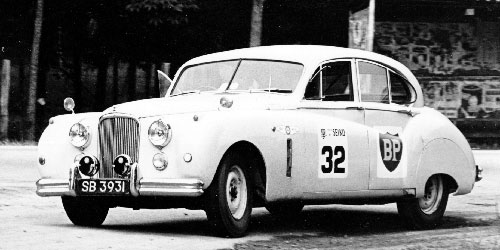
Alternatively, in a tented camp, the cook-house is closed, likewise any bar or canteen facility is similarly closed... and you are expected to find your (expletive deleted) tents and/or ablution facilities in the sodding dark!
(1) Saigon; August 1967 (FEAF MAMS).
(2) Ambon; July 1980 (RAAF MATU ALT1).
Oh, and to add insult to injury at Ambon, I got bollocked the following morning by the LTCOL OIC the camp because in the dark “One of my ORs had used the officers’ showers”. How did the Colonel know? Well said ‘OR’ (one of my Corporals actually), ex-Royal Australian Navy – was well tattooed from head to toe, including imperial measurements on what we shall discreetly call “an area where size matters”.
Regards,
Len
Len's rallying Mk VII Jag

From: Sam Rosenthal, Manchester
Subject: The Troops into Transportation Logistics and Engineering Event
Good Afternoon Tony,
The Troops into Transportation Logistics and Engineering Event takes place on Wednesday September 20 at the REME Museum (old Officers' Mess) MoD Lyneham from 0930 to 1230.
It is free to attend for anyone thinking about leaving the forces, in their resettlement or those who have left and want to come and network within these circles and have a catch up!
It is being organised by ex-Mover Mal Robinson, who will be there on the day and features a superb line up of exhibitors. They include: Serco, Babcock, Swissport, Veterans into Logistics, Aviation Systems Group, National Express, DPD, Nuclear Transport Solutions, Associated British Ports and many more!
The event is free to attend and there's even a free cuppa on the go. It might also provide an opportunity for a mini reunion for some Old Bods to organise around. The link to register for the event is https://www.eventbrite.com/e/troops-into-transportation-logistics-and-engineering-event-tickets-644849009747
If you need to contact the events team this can be done via hospitality@nafese2023.com
Subject: The Troops into Transportation Logistics and Engineering Event
Good Afternoon Tony,
The Troops into Transportation Logistics and Engineering Event takes place on Wednesday September 20 at the REME Museum (old Officers' Mess) MoD Lyneham from 0930 to 1230.
It is free to attend for anyone thinking about leaving the forces, in their resettlement or those who have left and want to come and network within these circles and have a catch up!
It is being organised by ex-Mover Mal Robinson, who will be there on the day and features a superb line up of exhibitors. They include: Serco, Babcock, Swissport, Veterans into Logistics, Aviation Systems Group, National Express, DPD, Nuclear Transport Solutions, Associated British Ports and many more!
The event is free to attend and there's even a free cuppa on the go. It might also provide an opportunity for a mini reunion for some Old Bods to organise around. The link to register for the event is https://www.eventbrite.com/e/troops-into-transportation-logistics-and-engineering-event-tickets-644849009747
If you need to contact the events team this can be done via hospitality@nafese2023.com
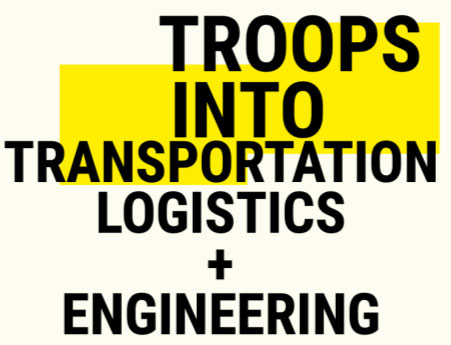
Many thanks,
Sam
Sam Rosenthal
Event Manager
NAFESE 2023 events
M: 07444098857
www.nafese2023.com
Sam
Sam Rosenthal
Event Manager
NAFESE 2023 events
M: 07444098857
www.nafese2023.com
This Newsletter is Dedicated
to the Memory of
Iain Mummé (RAF)
to the Memory of
Iain Mummé (RAF)
Tony Gale
ukmamsoba@gmail.com
ukmamsoba@gmail.com







